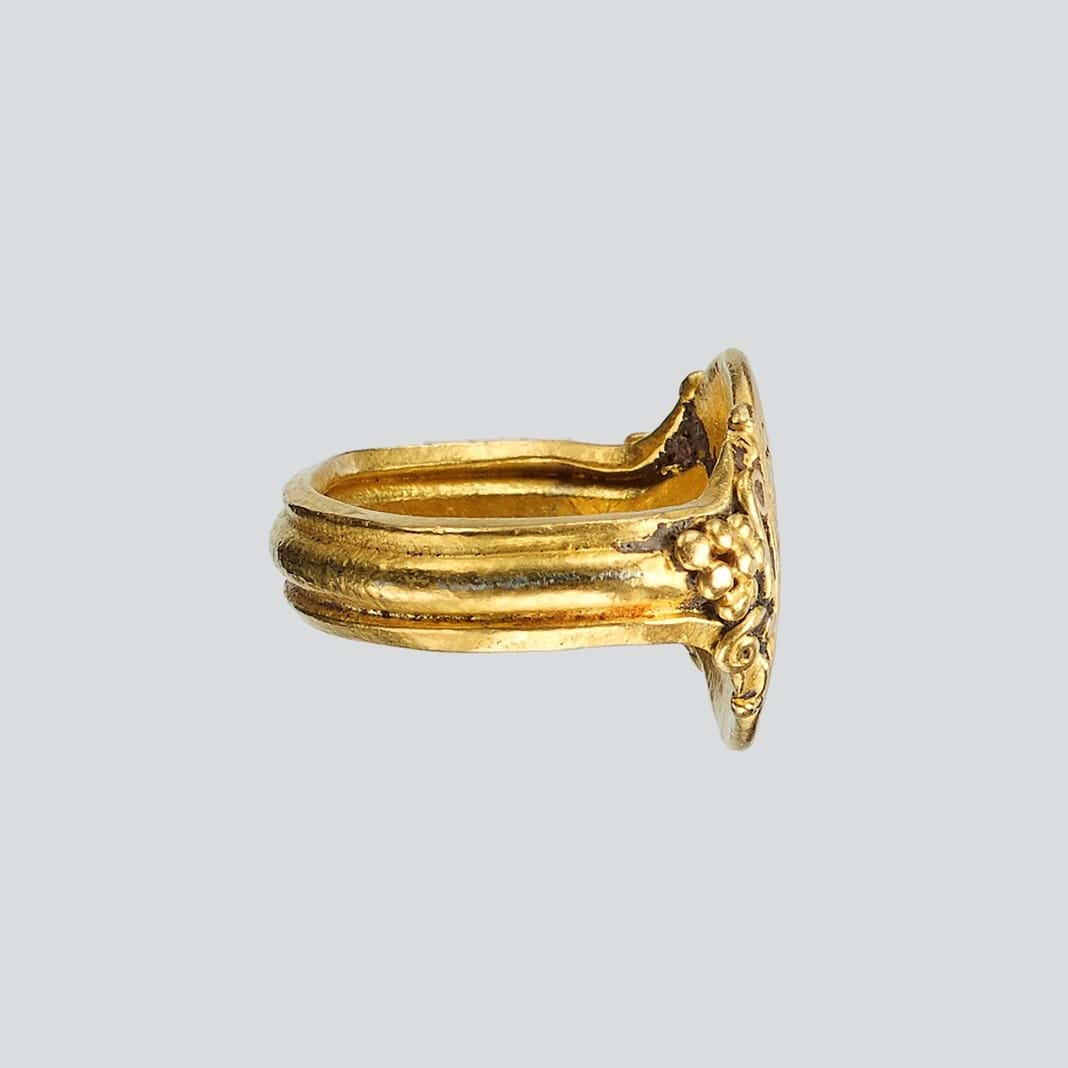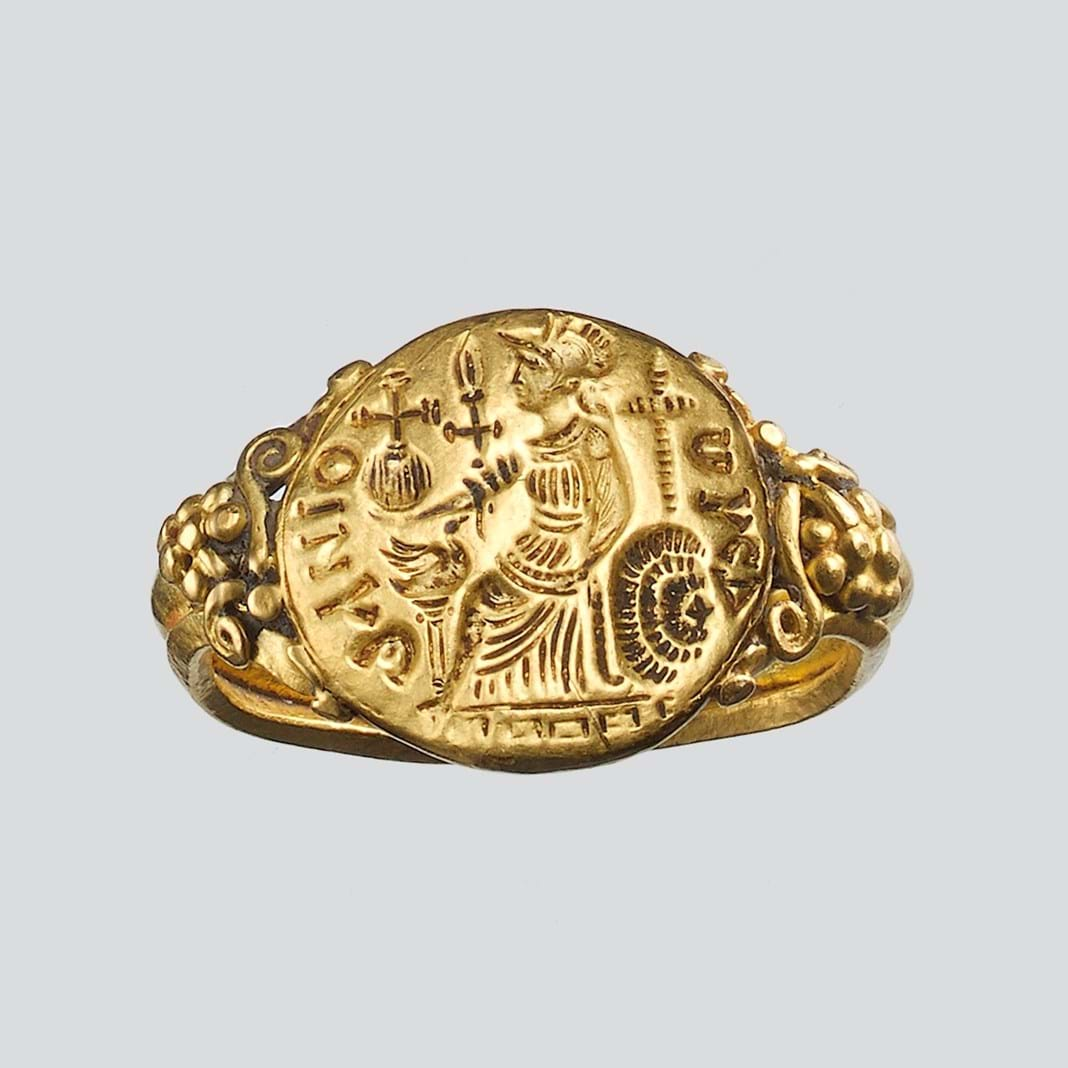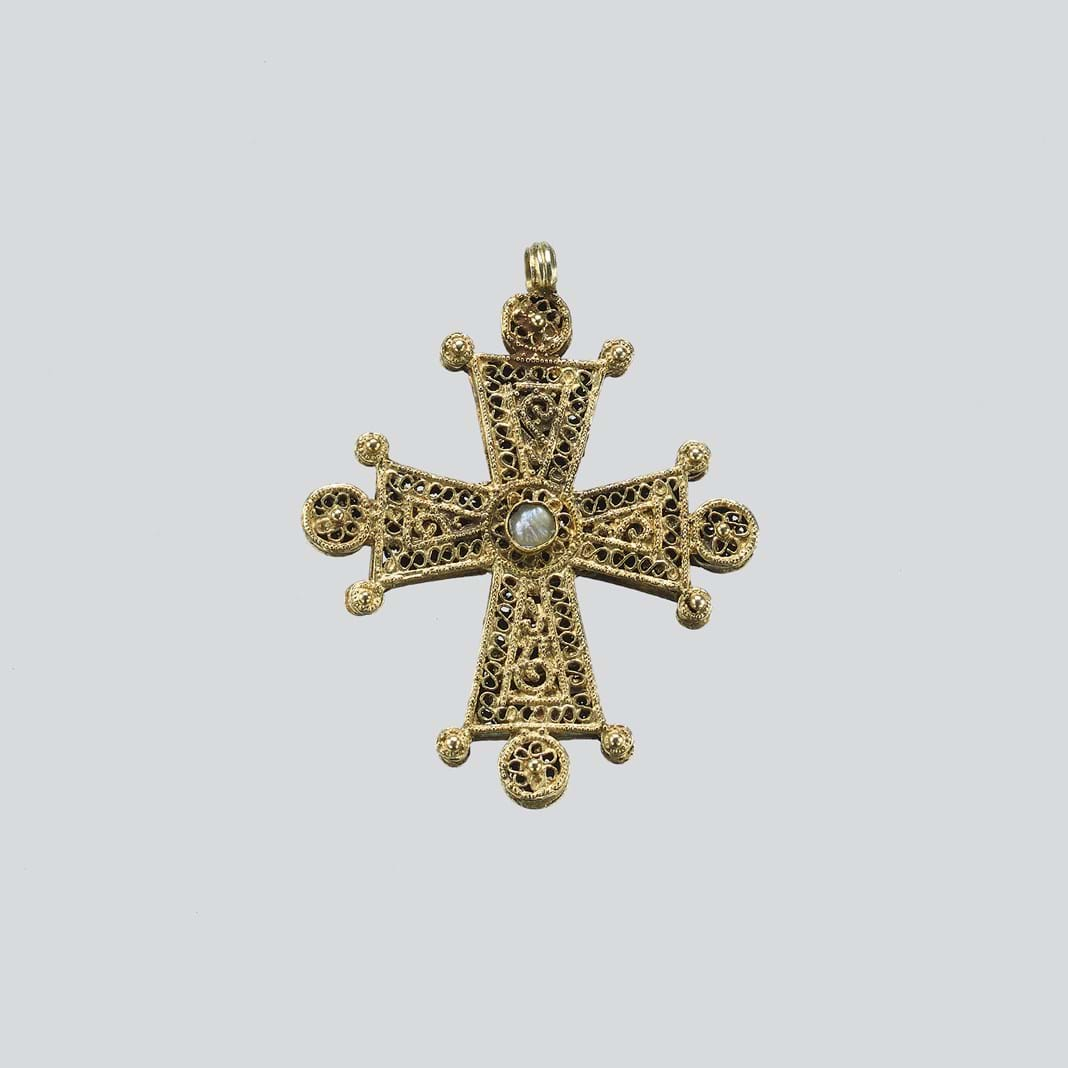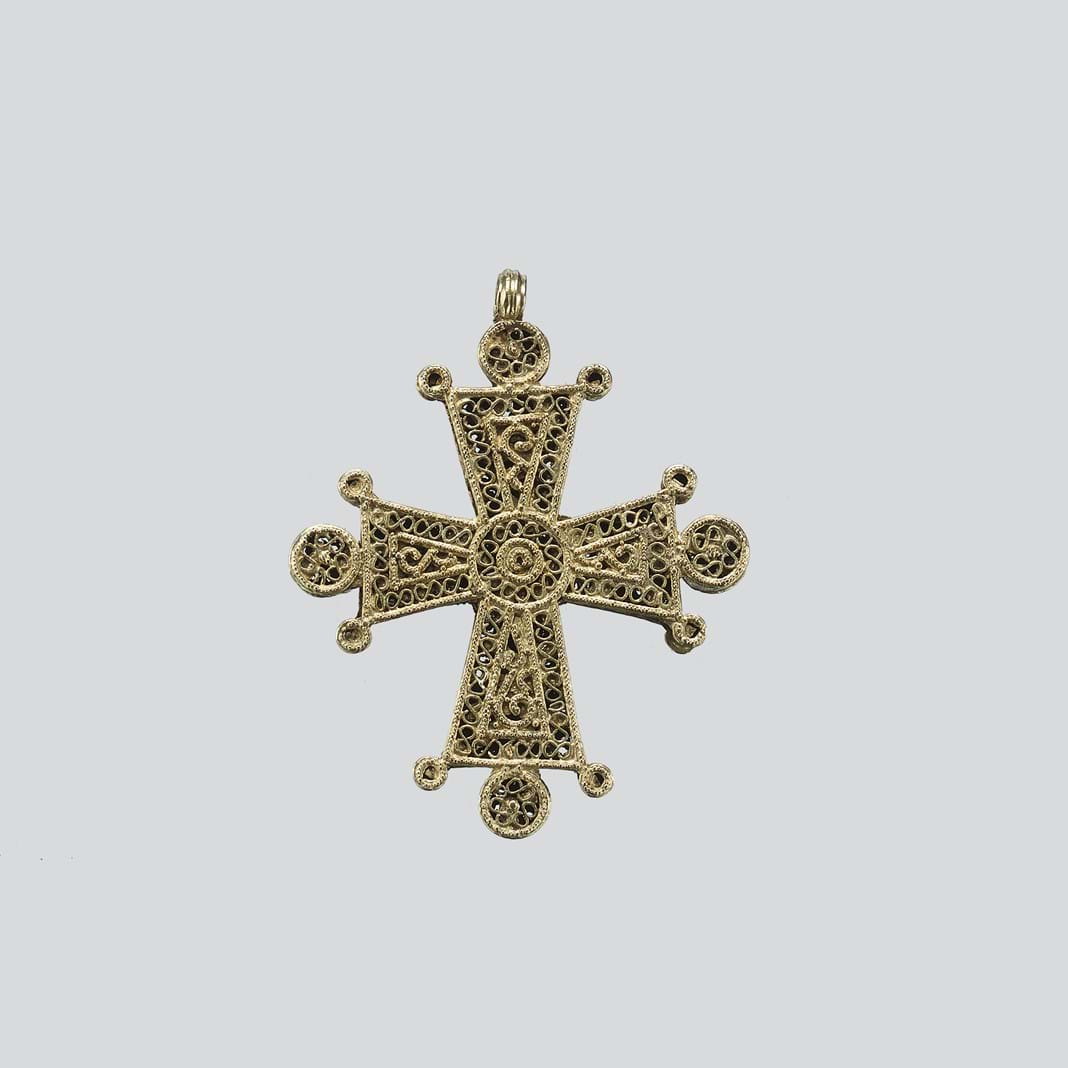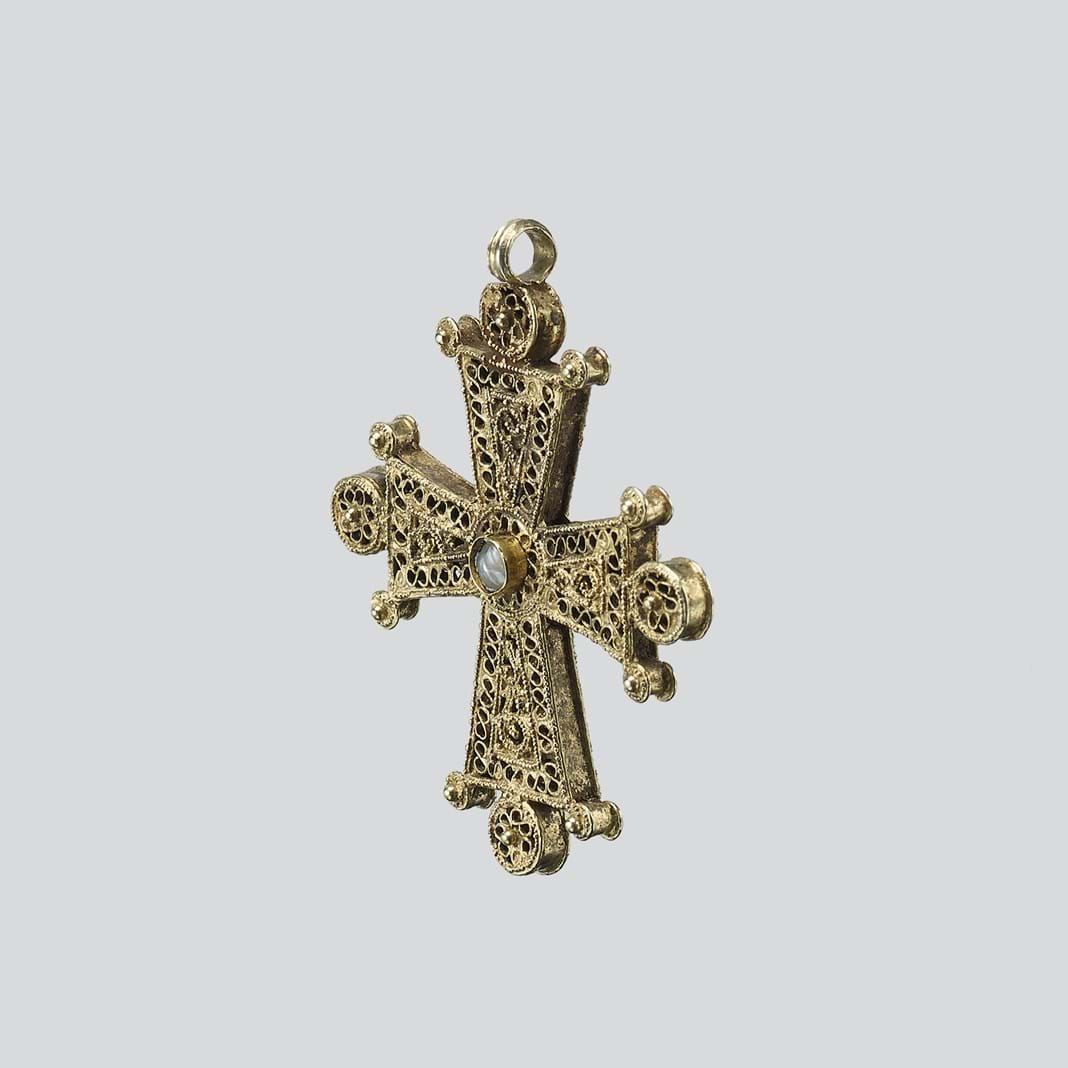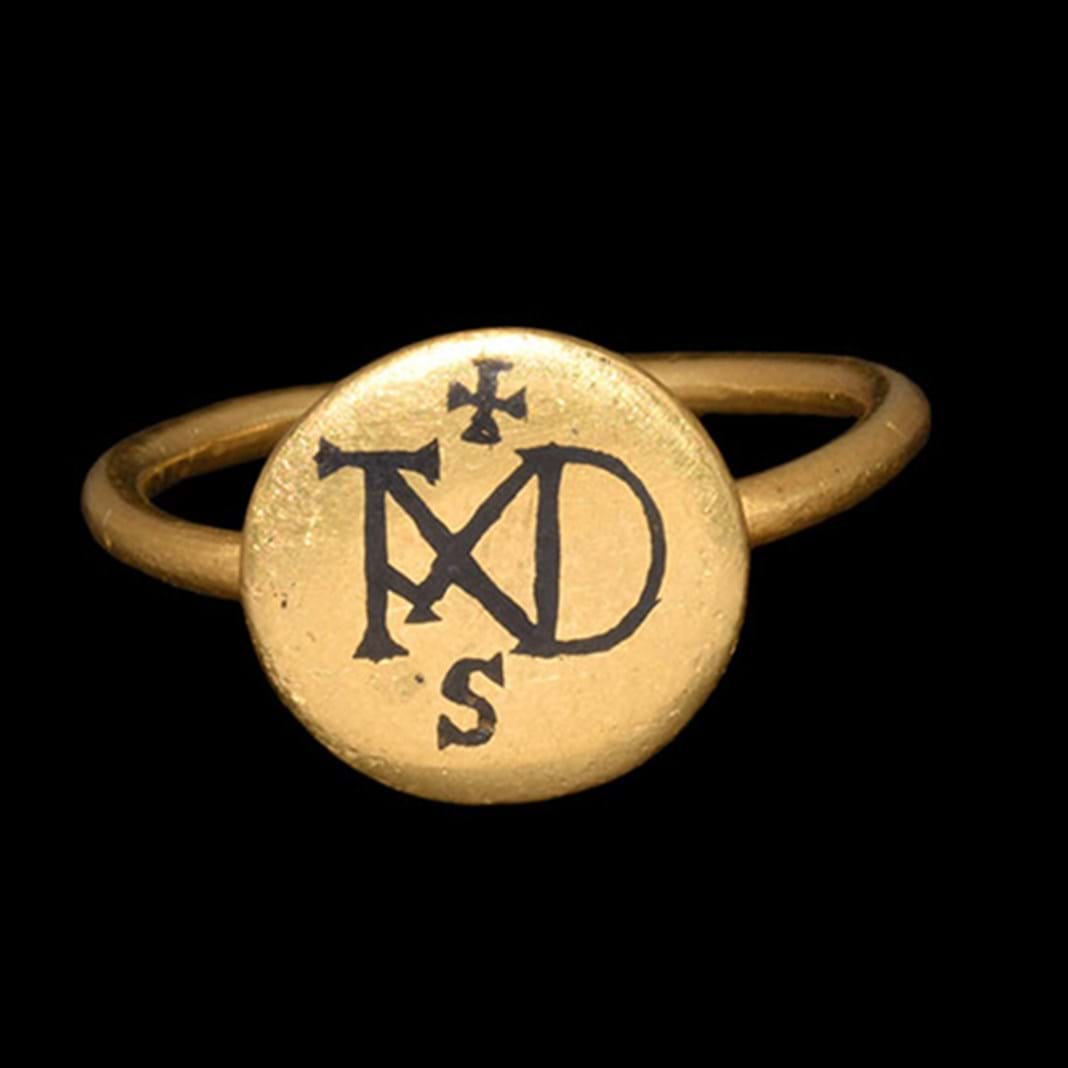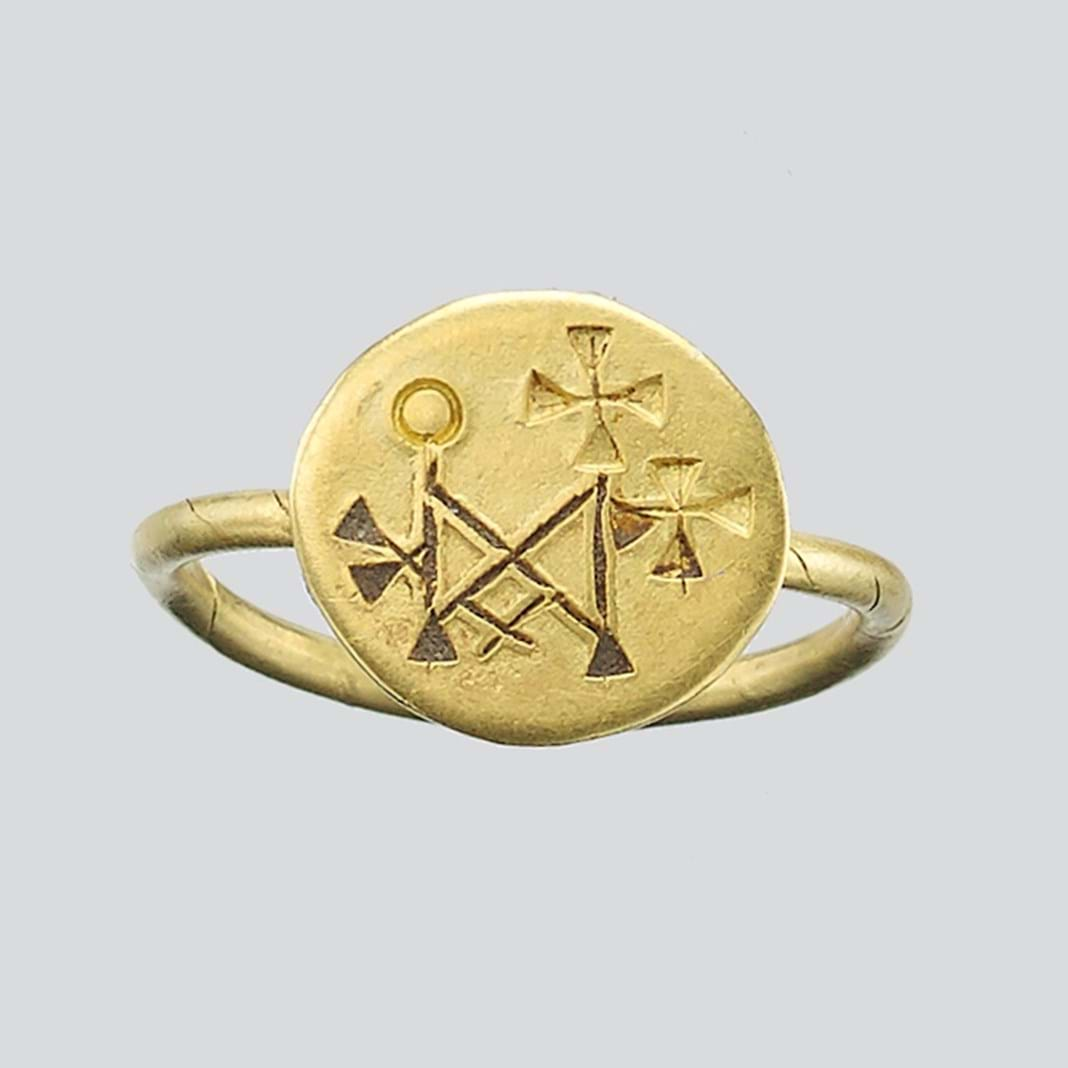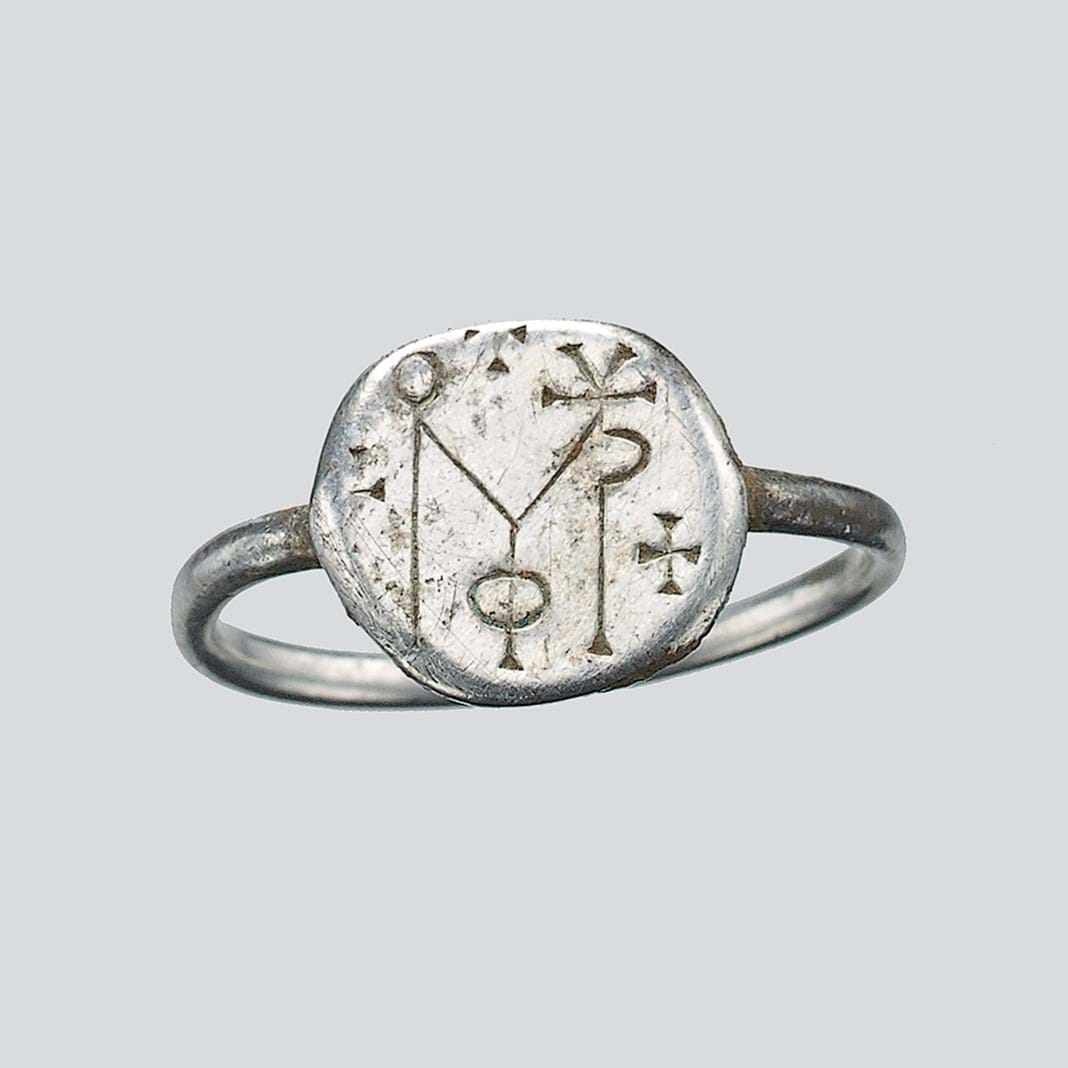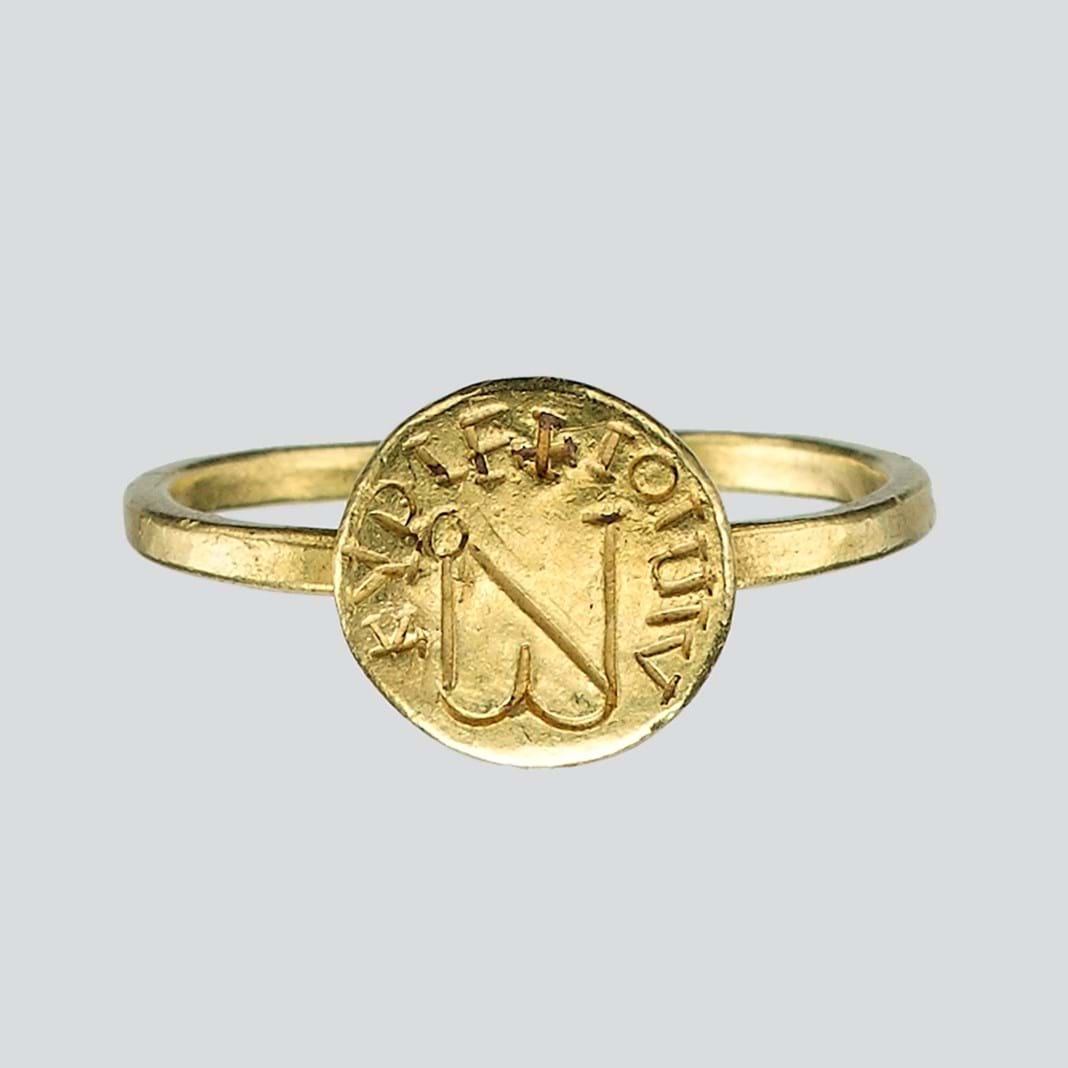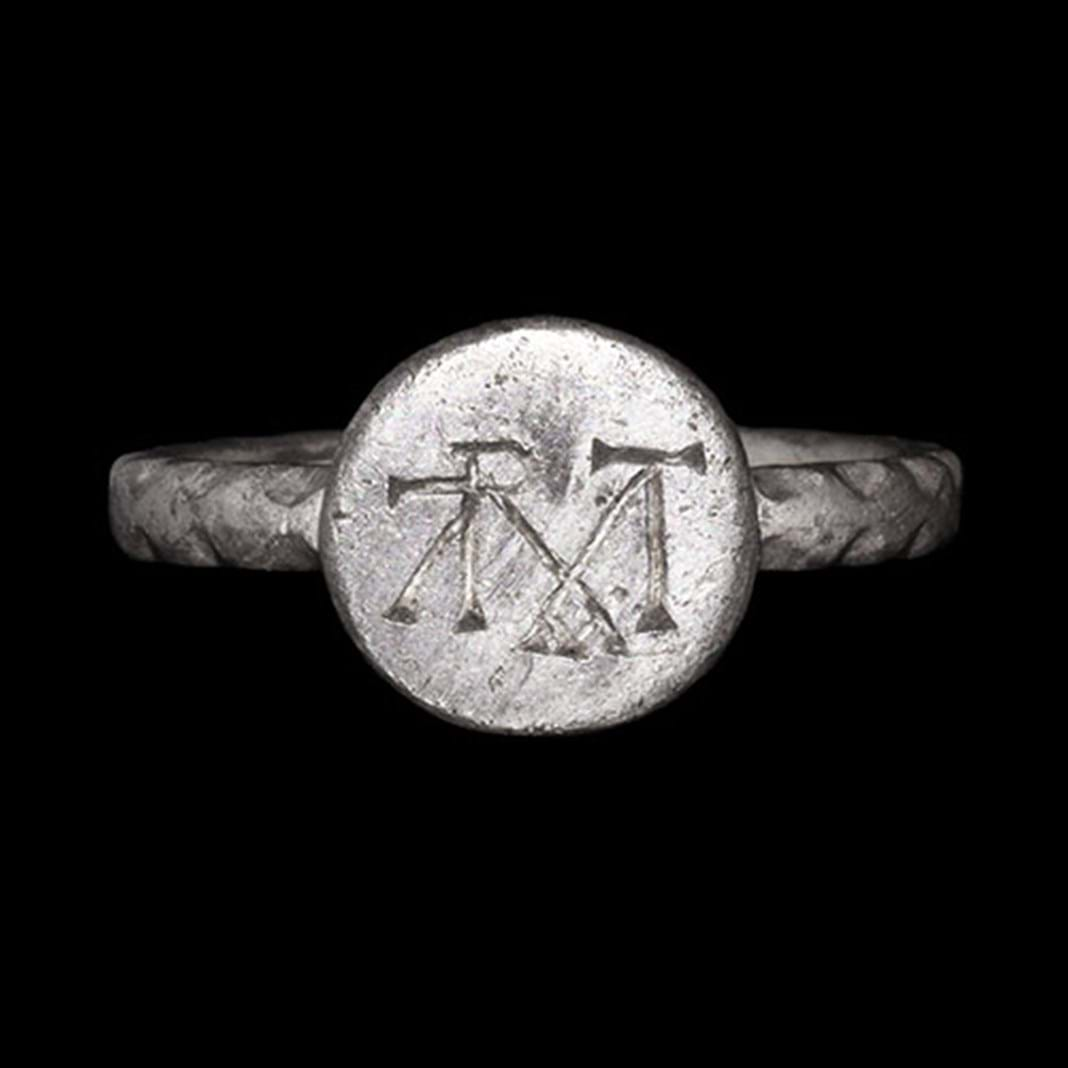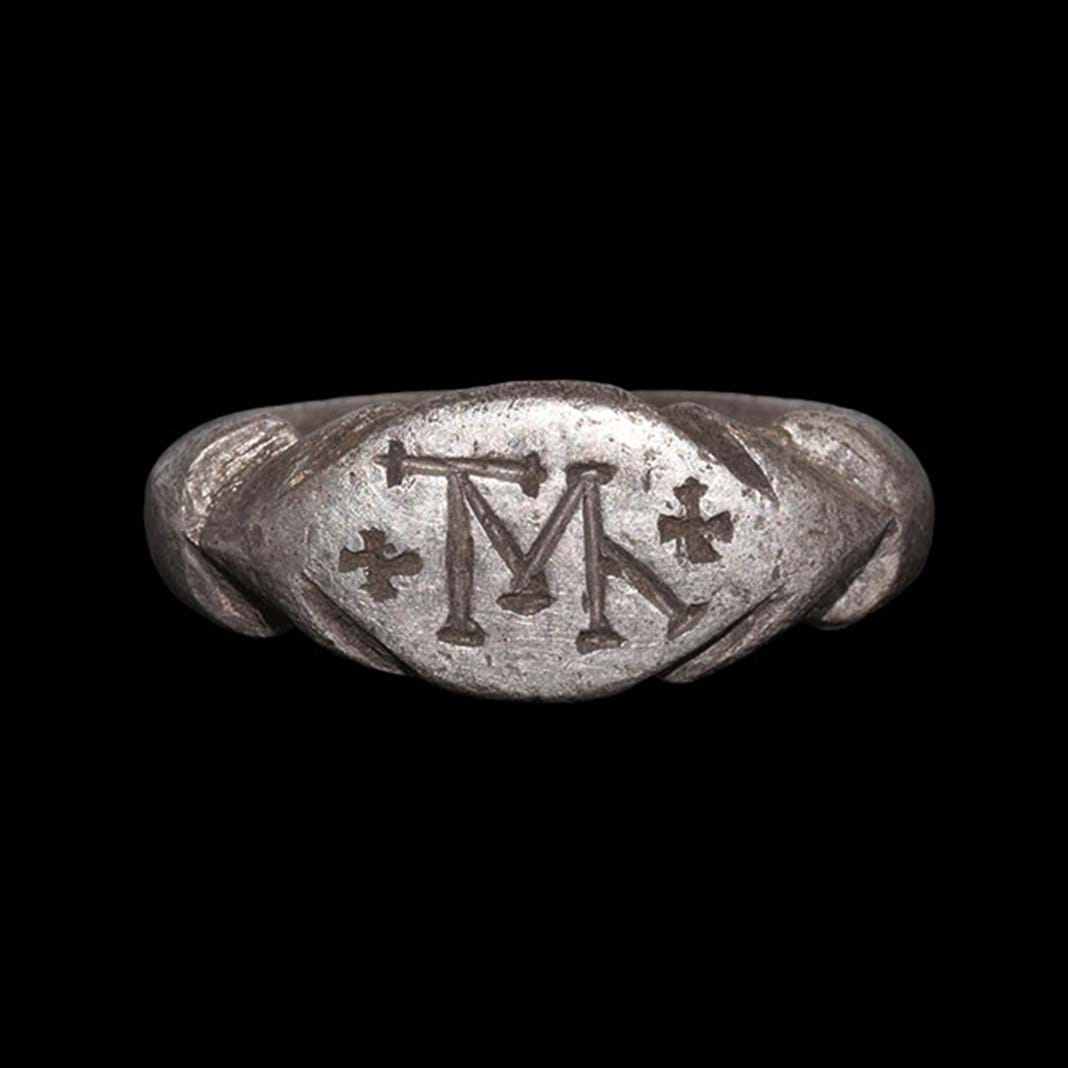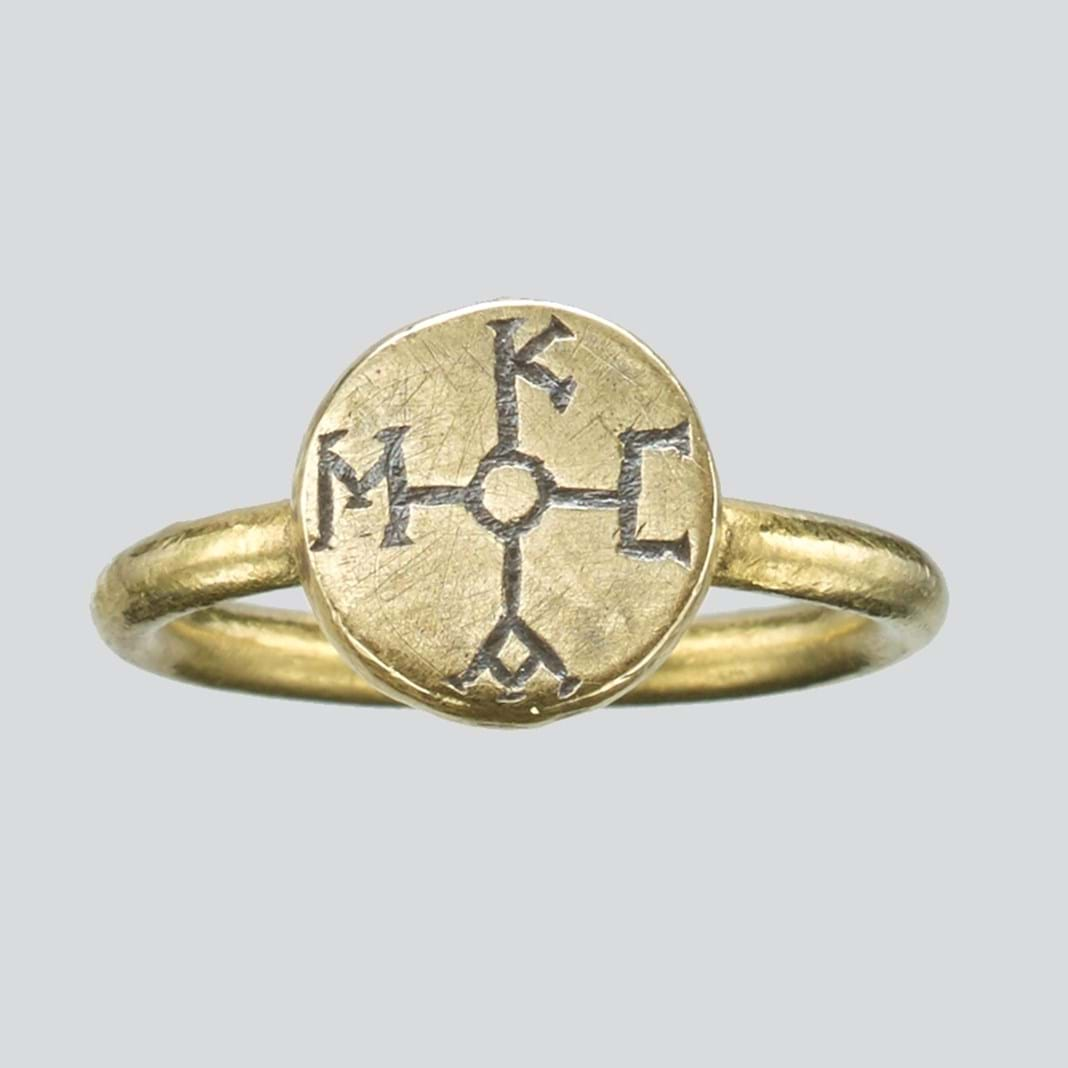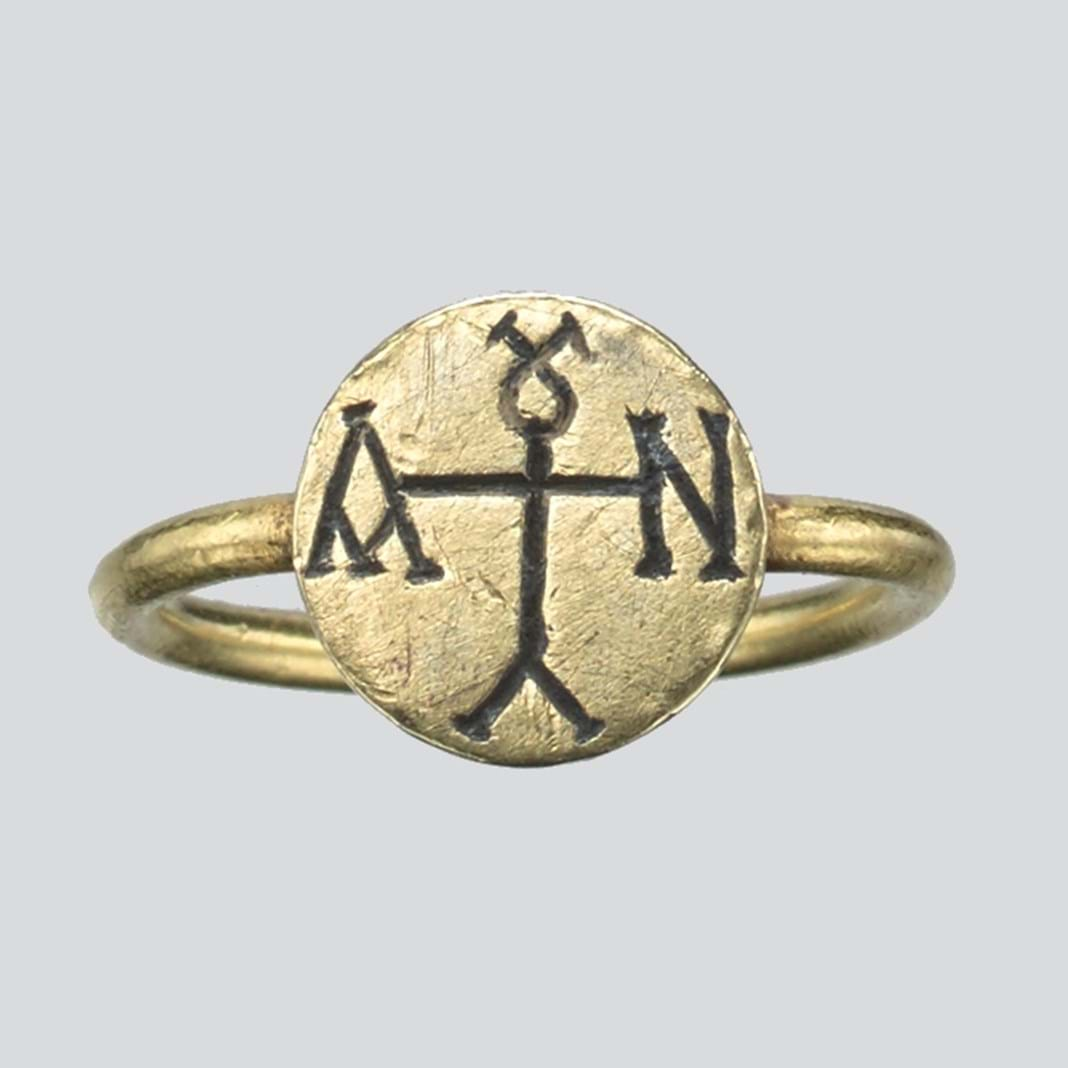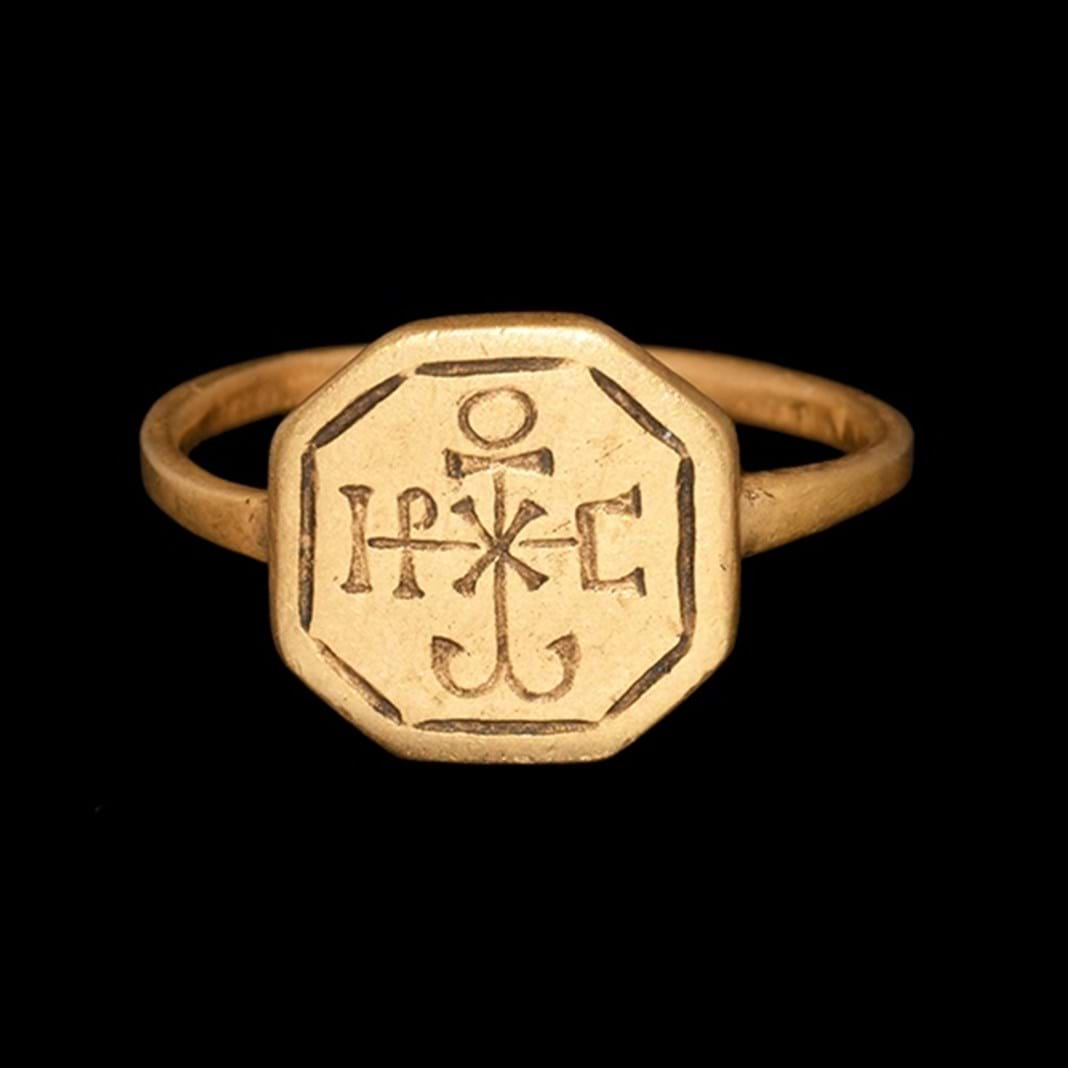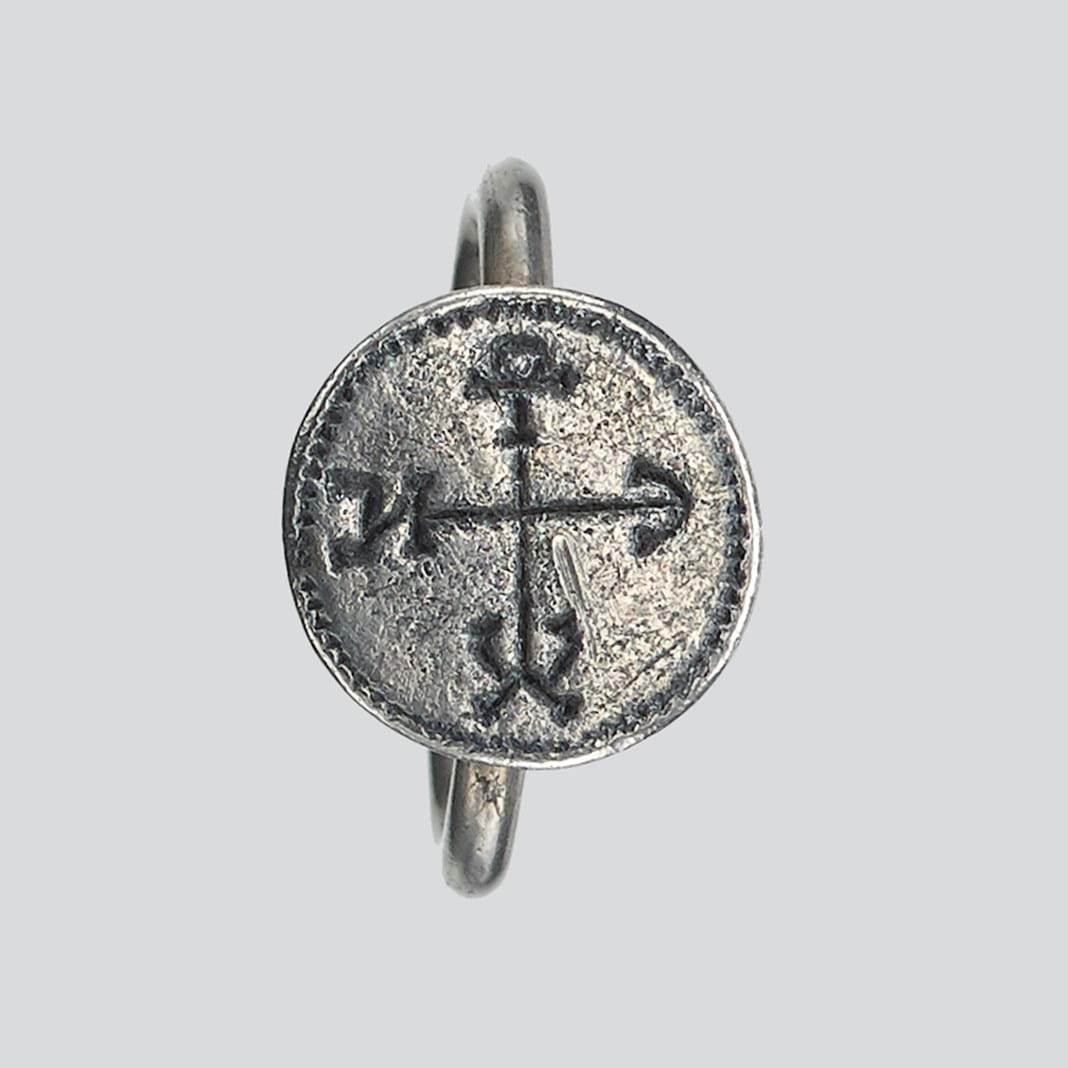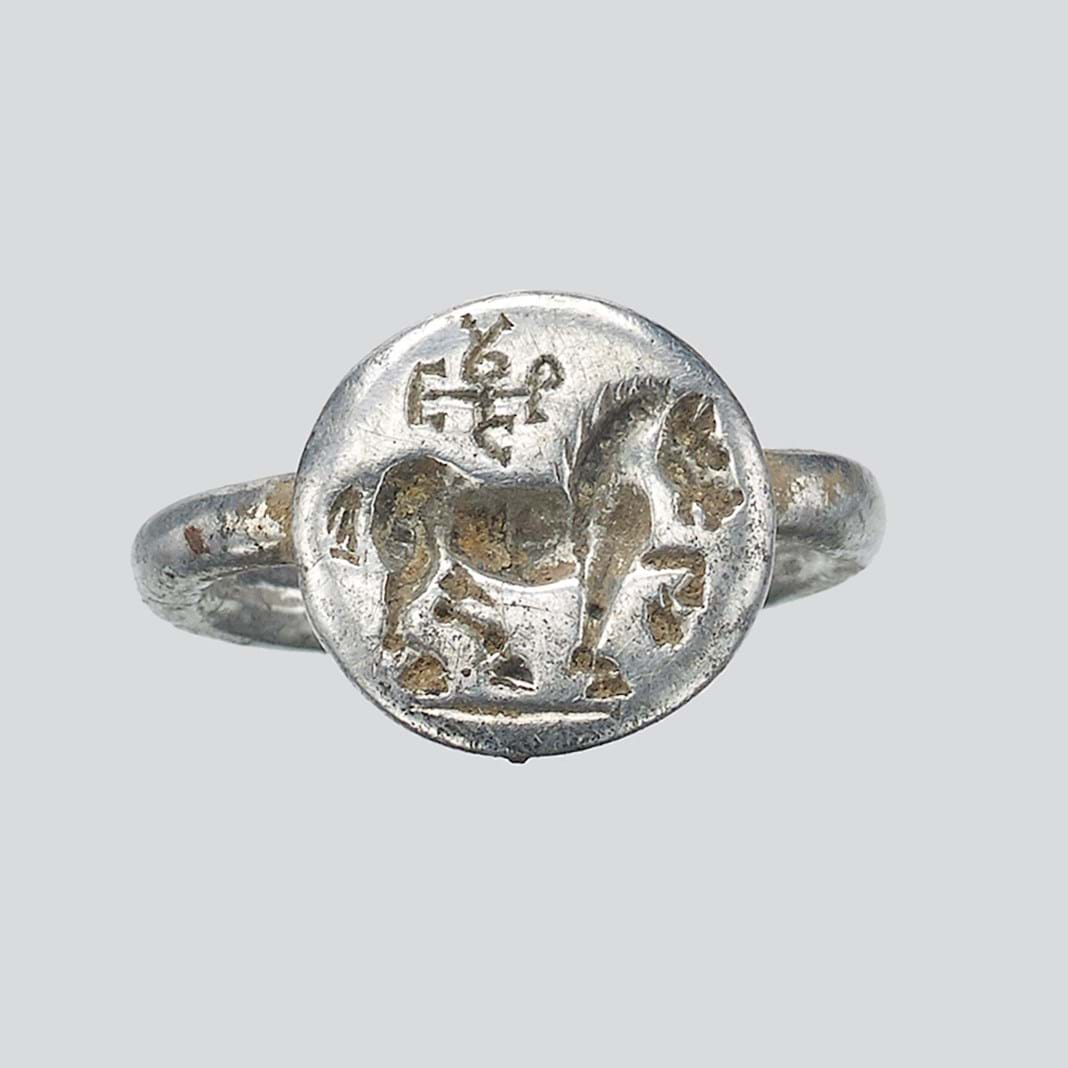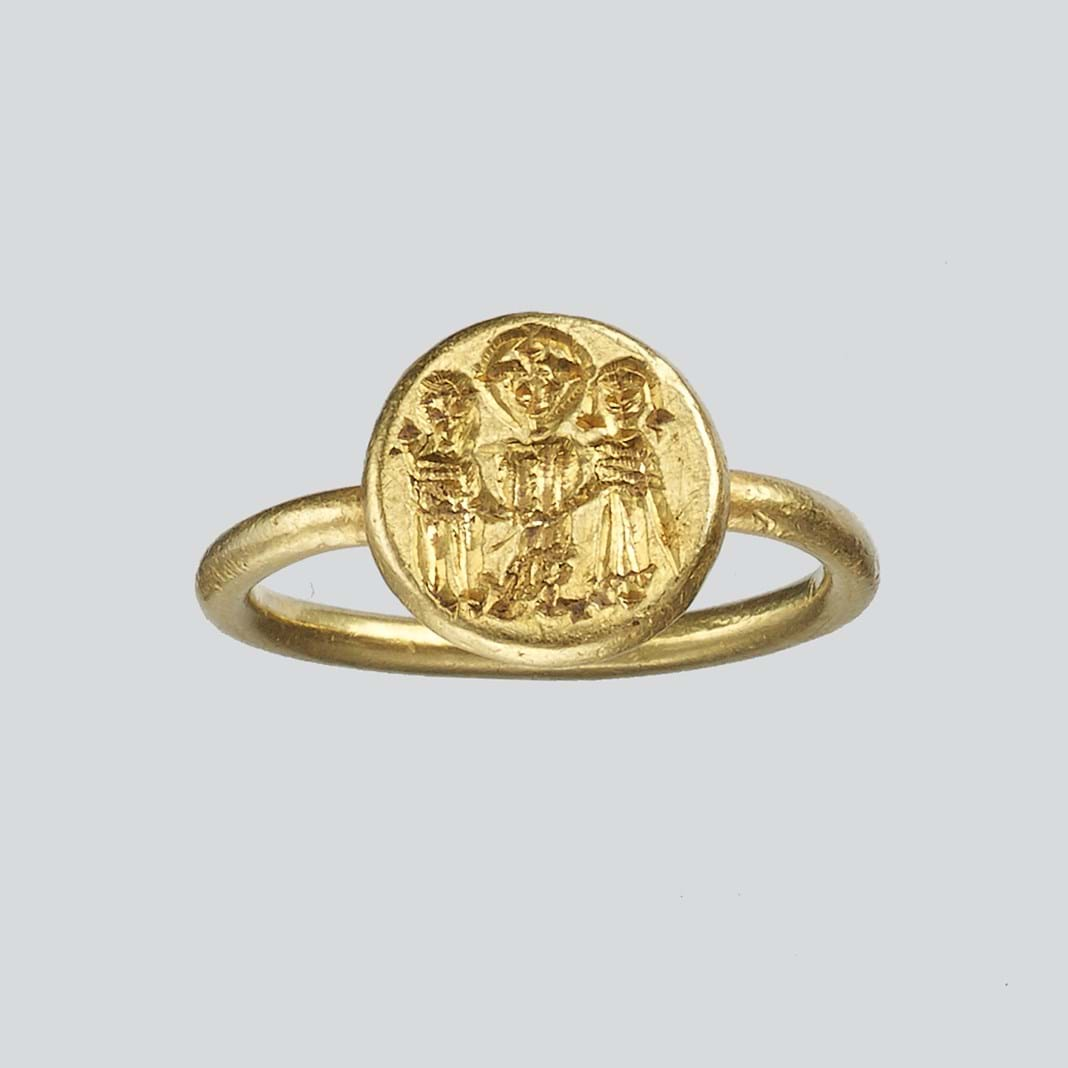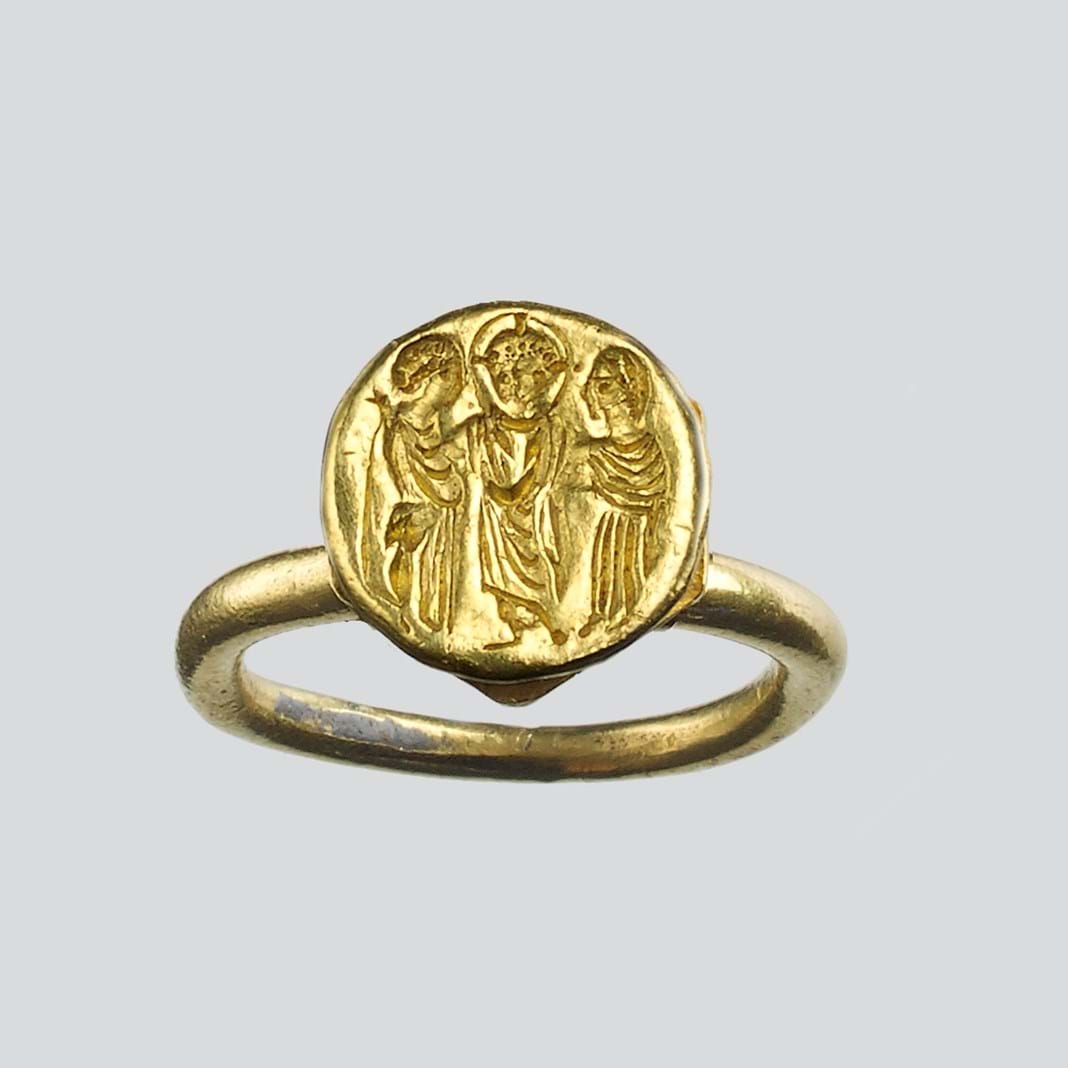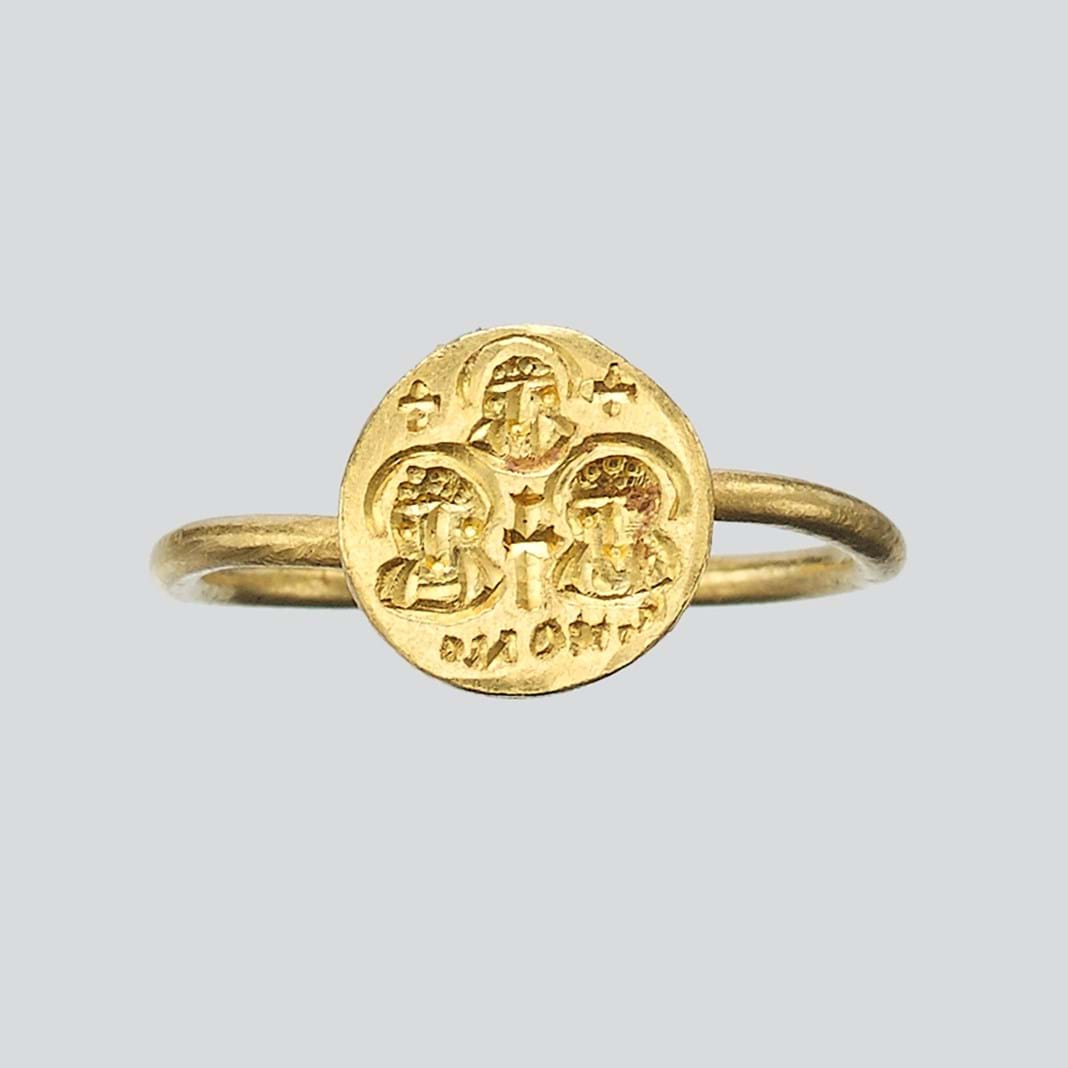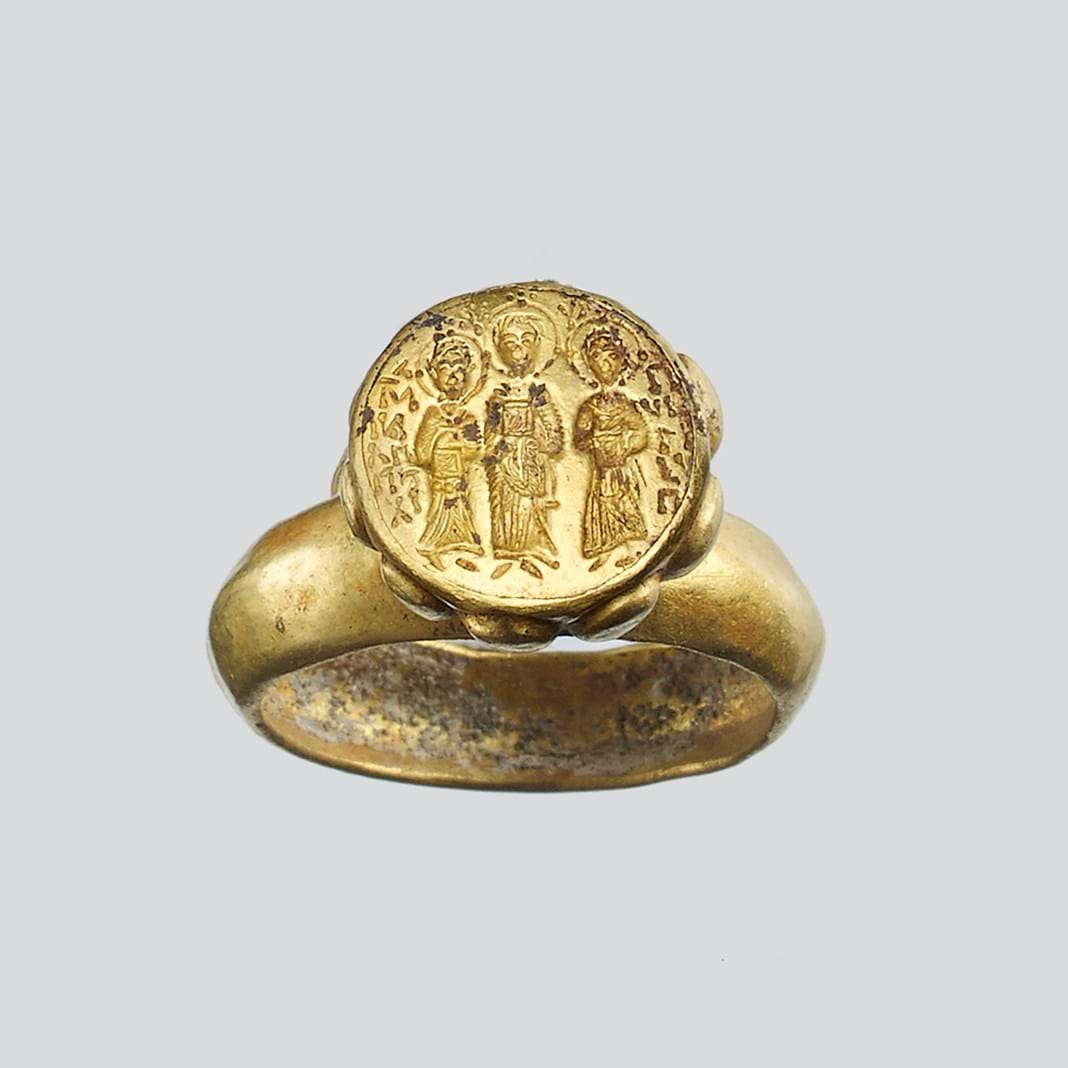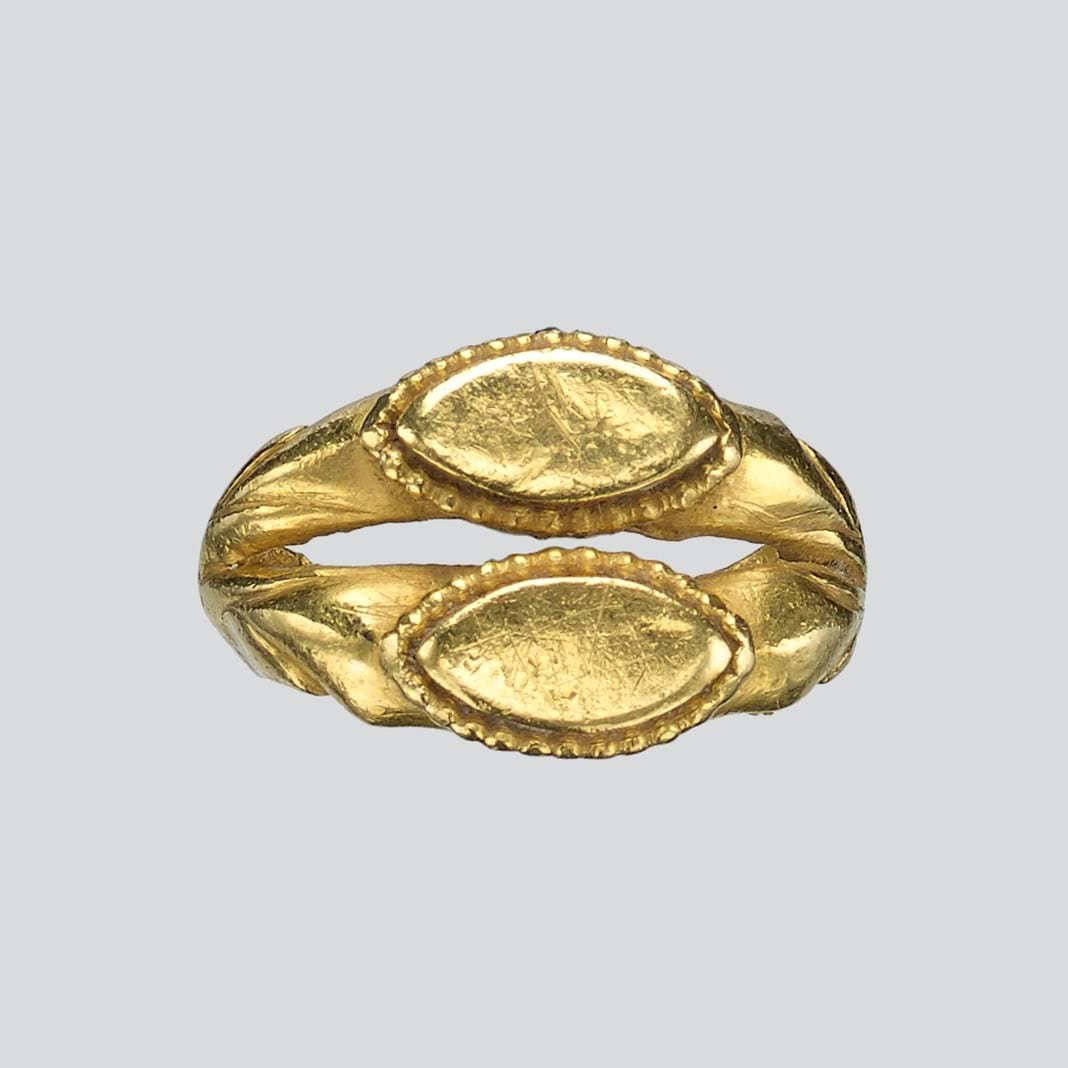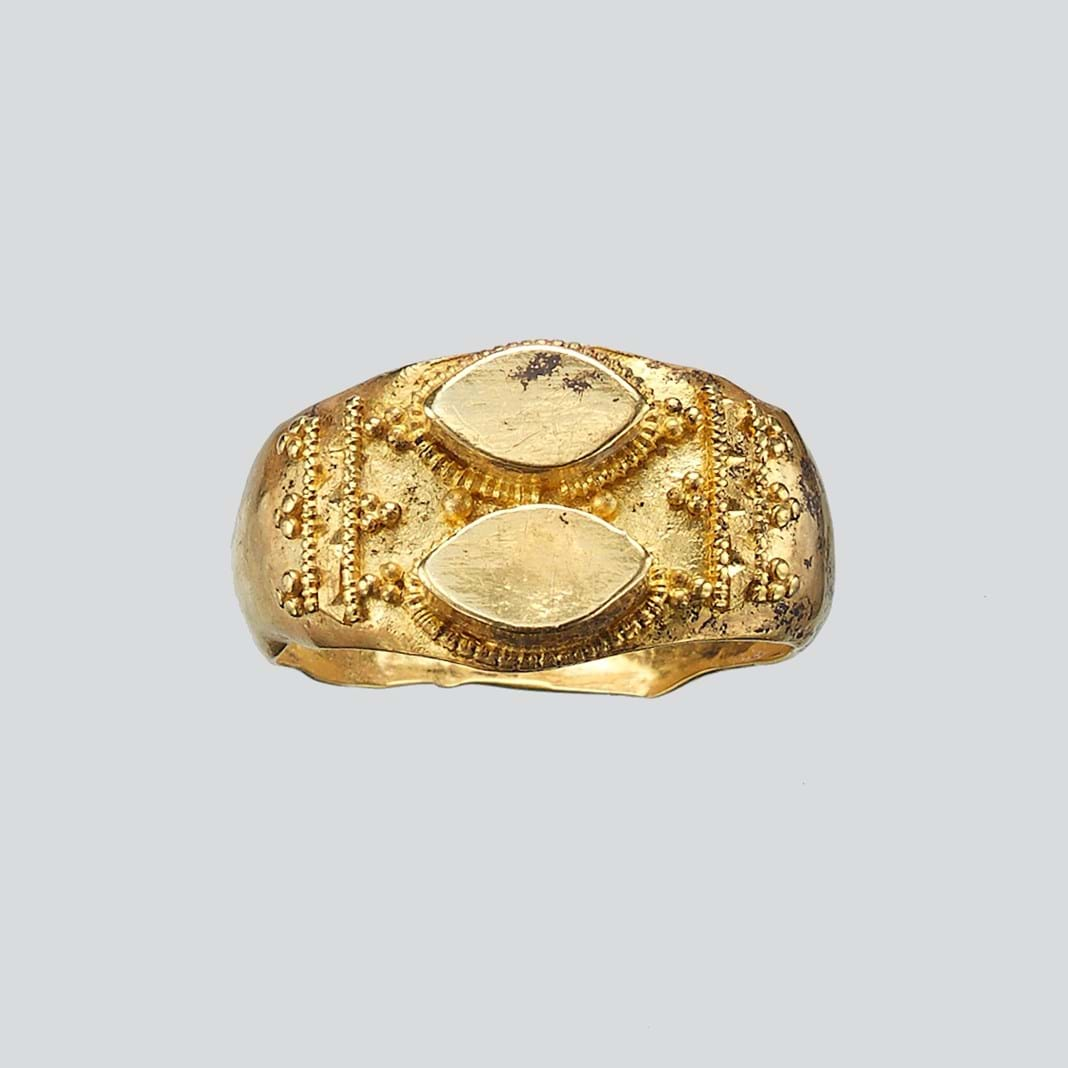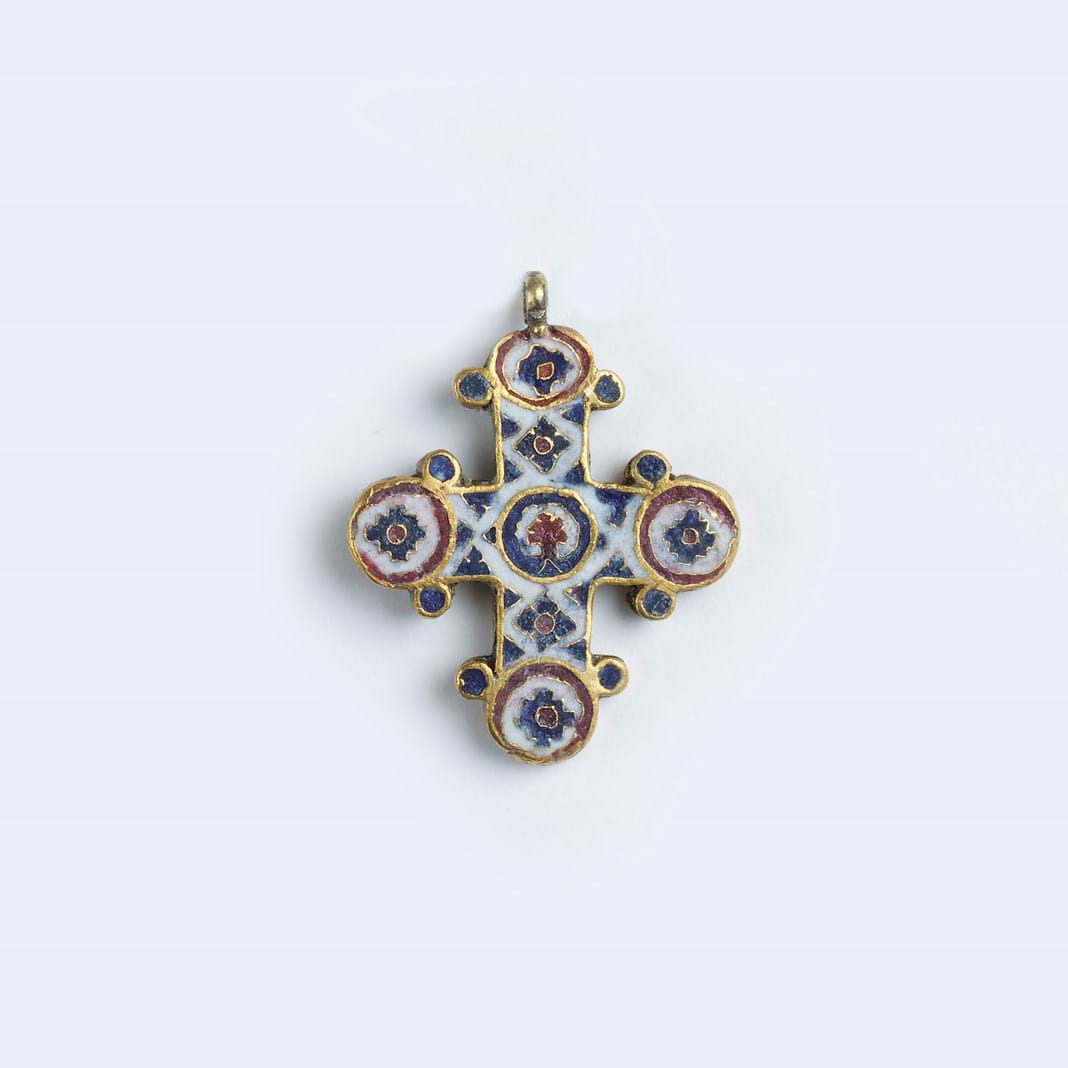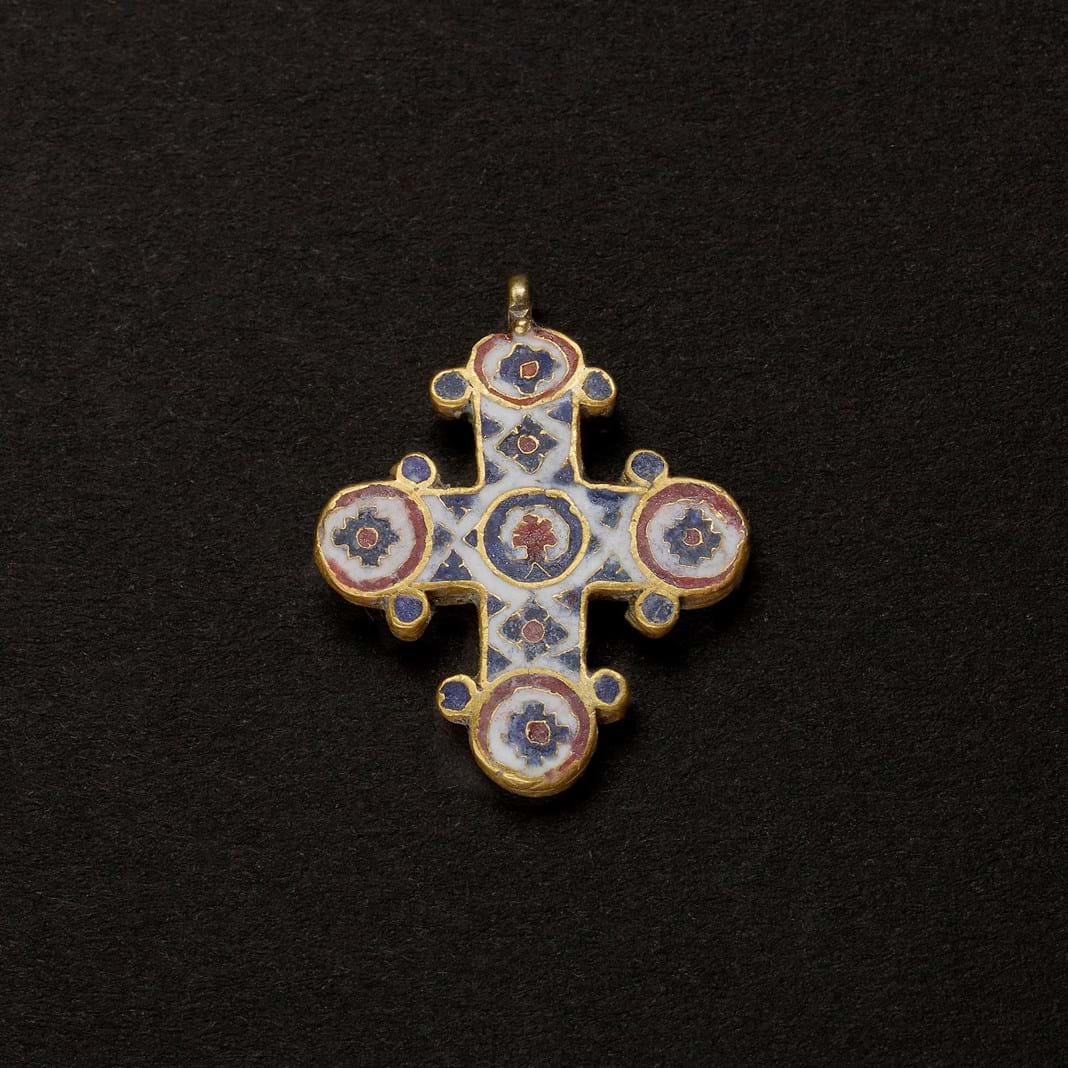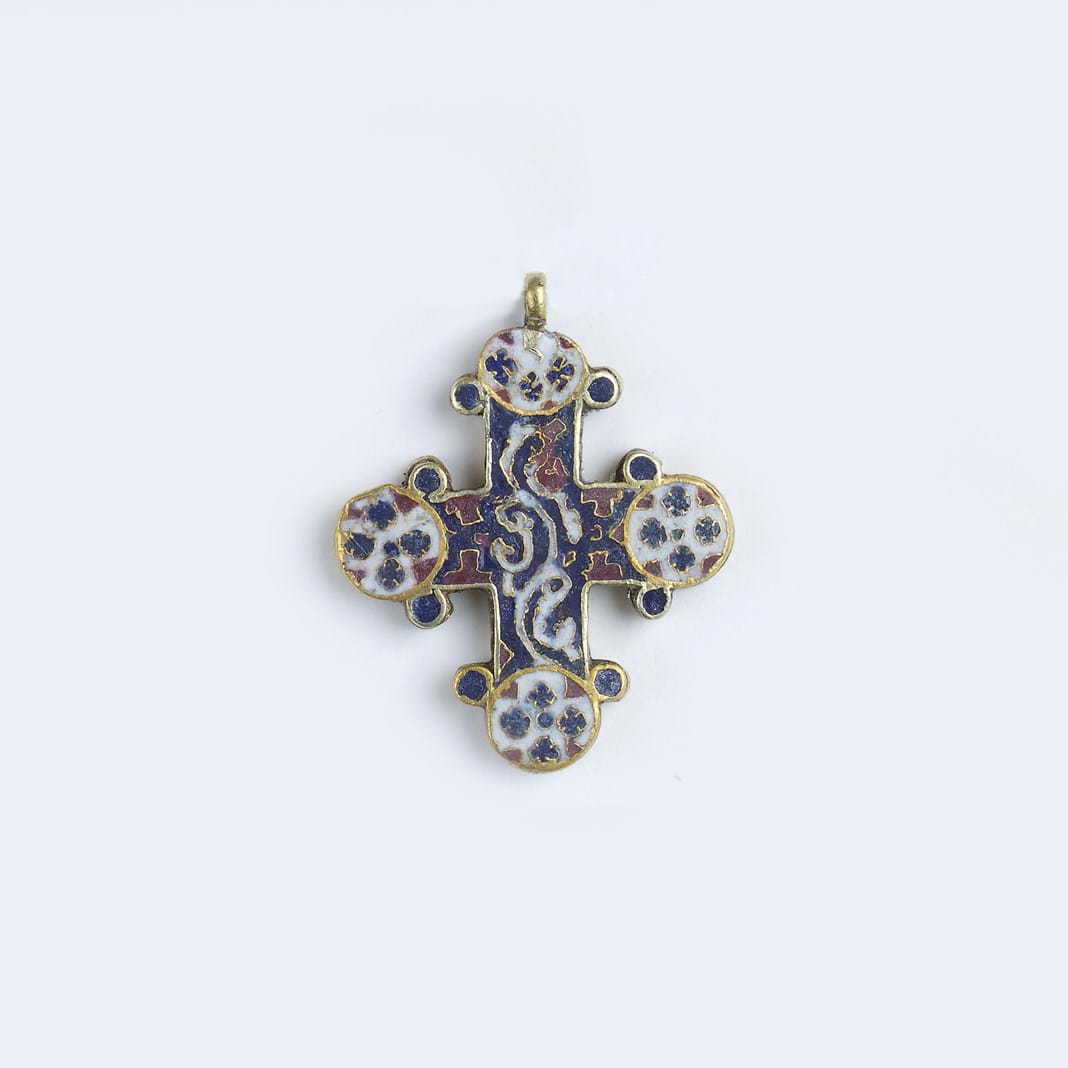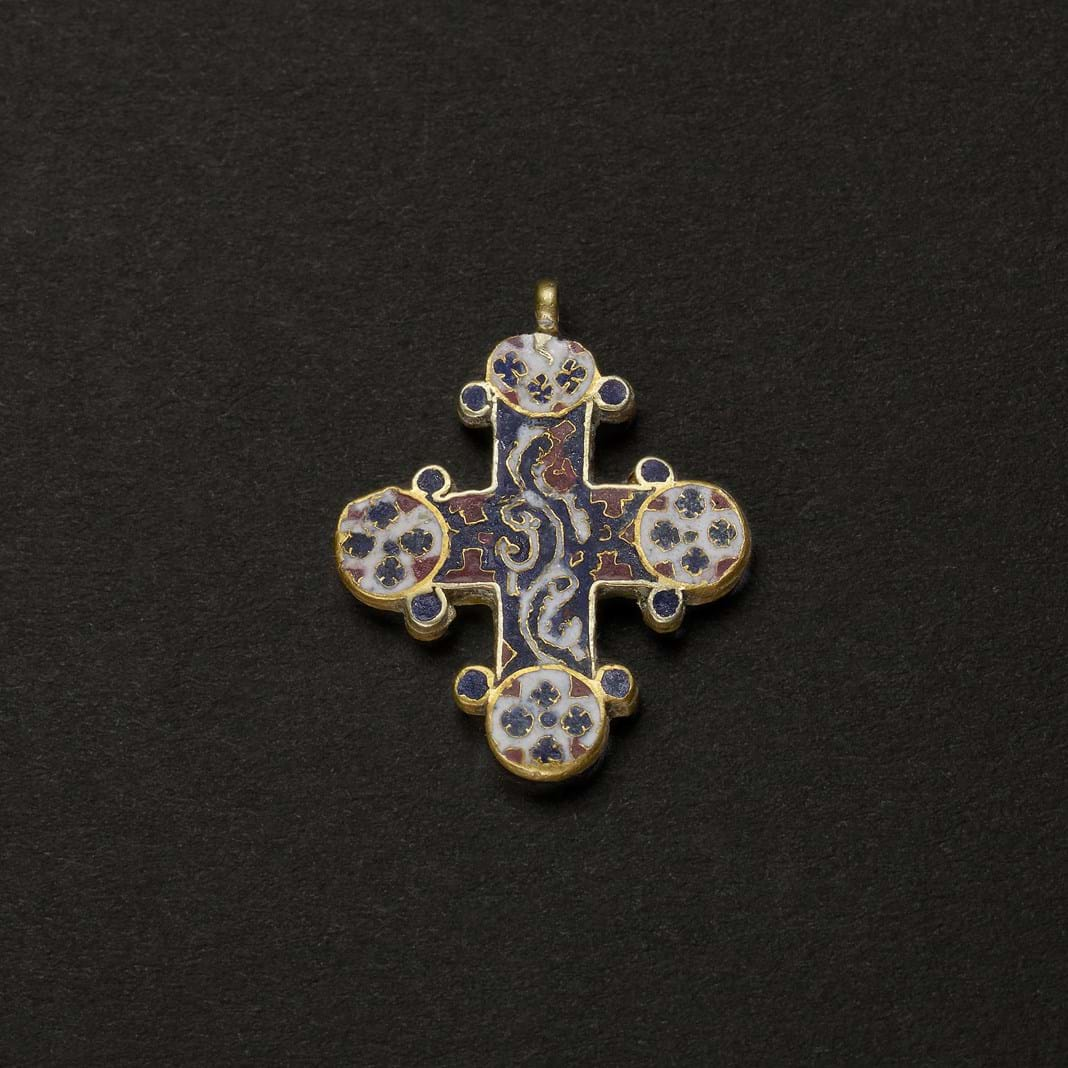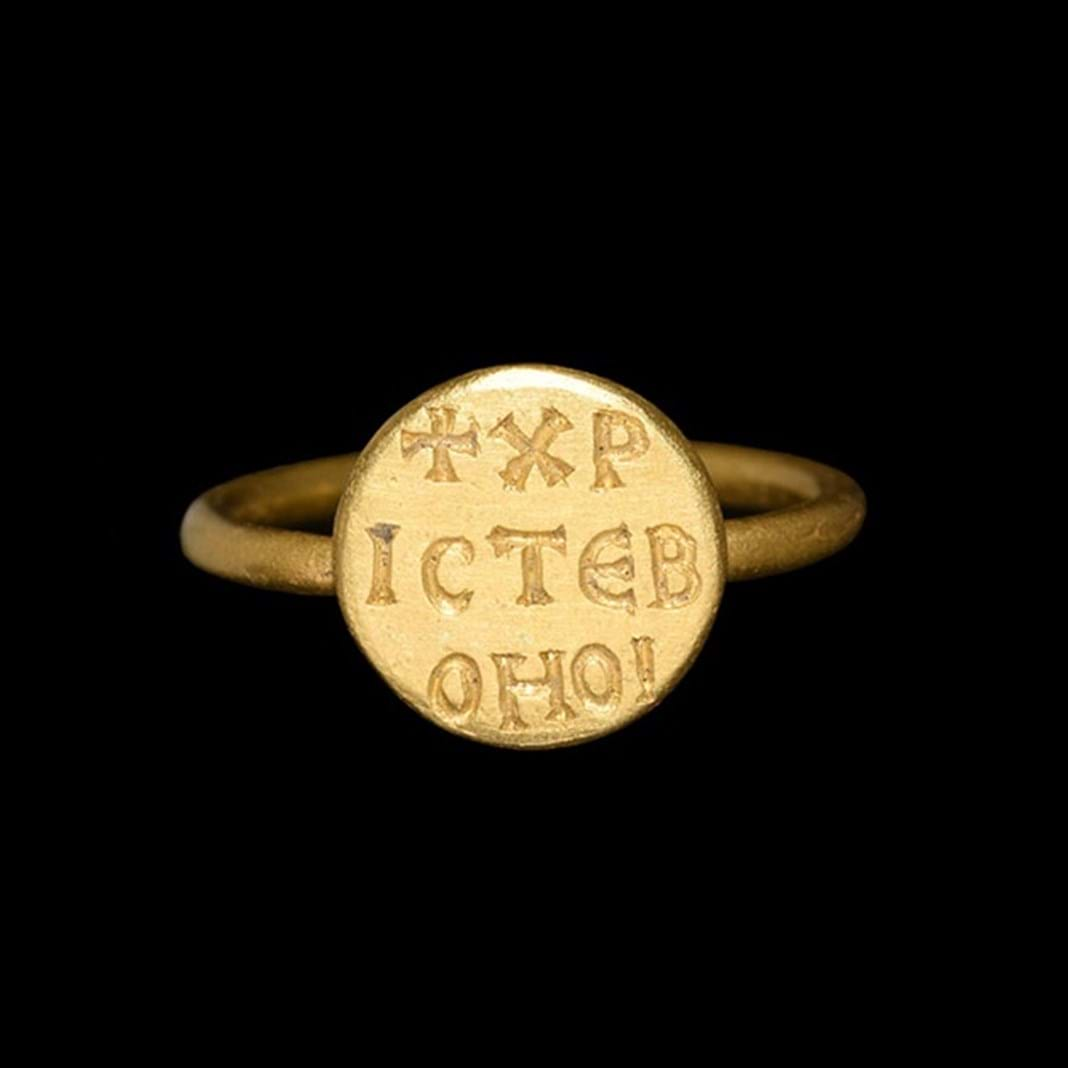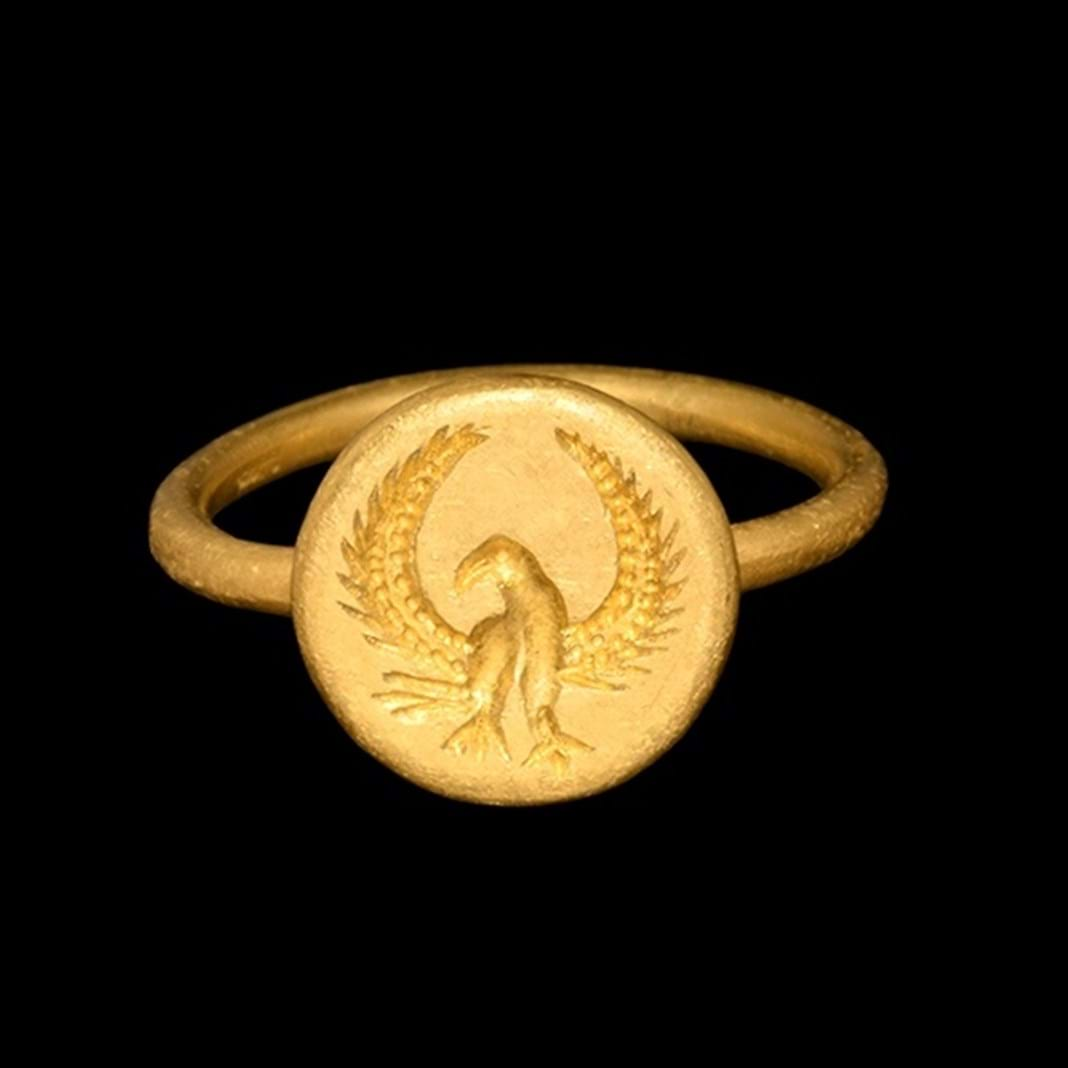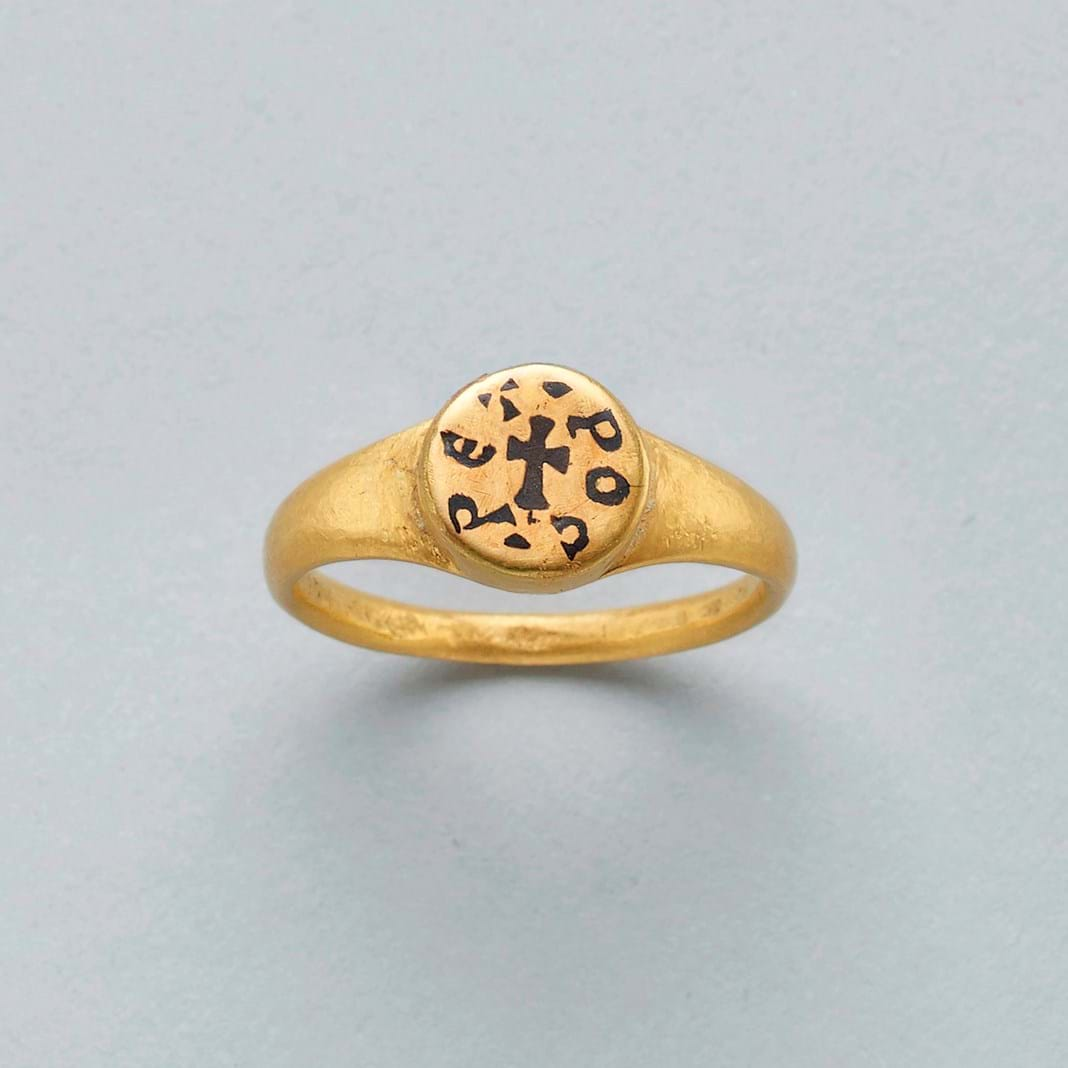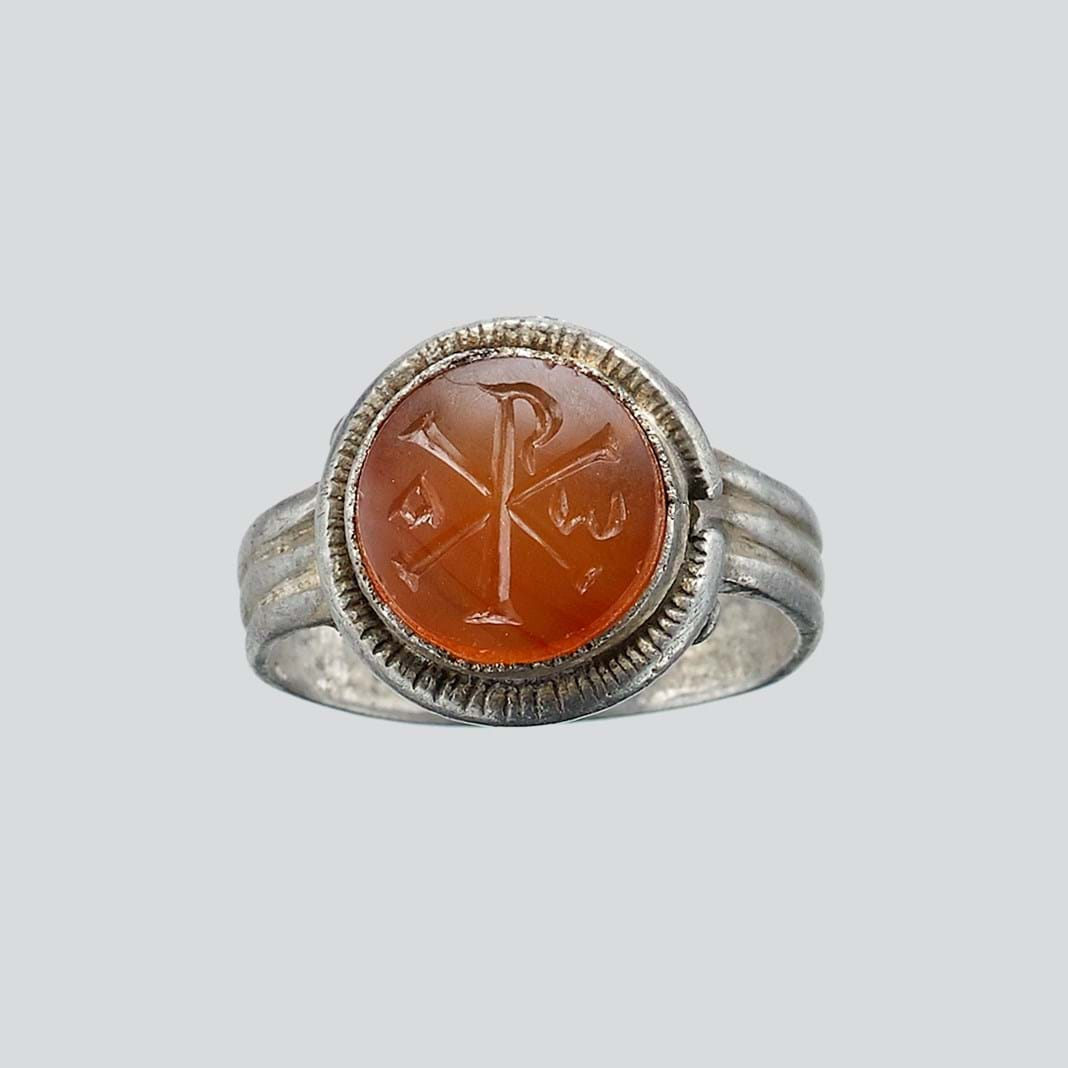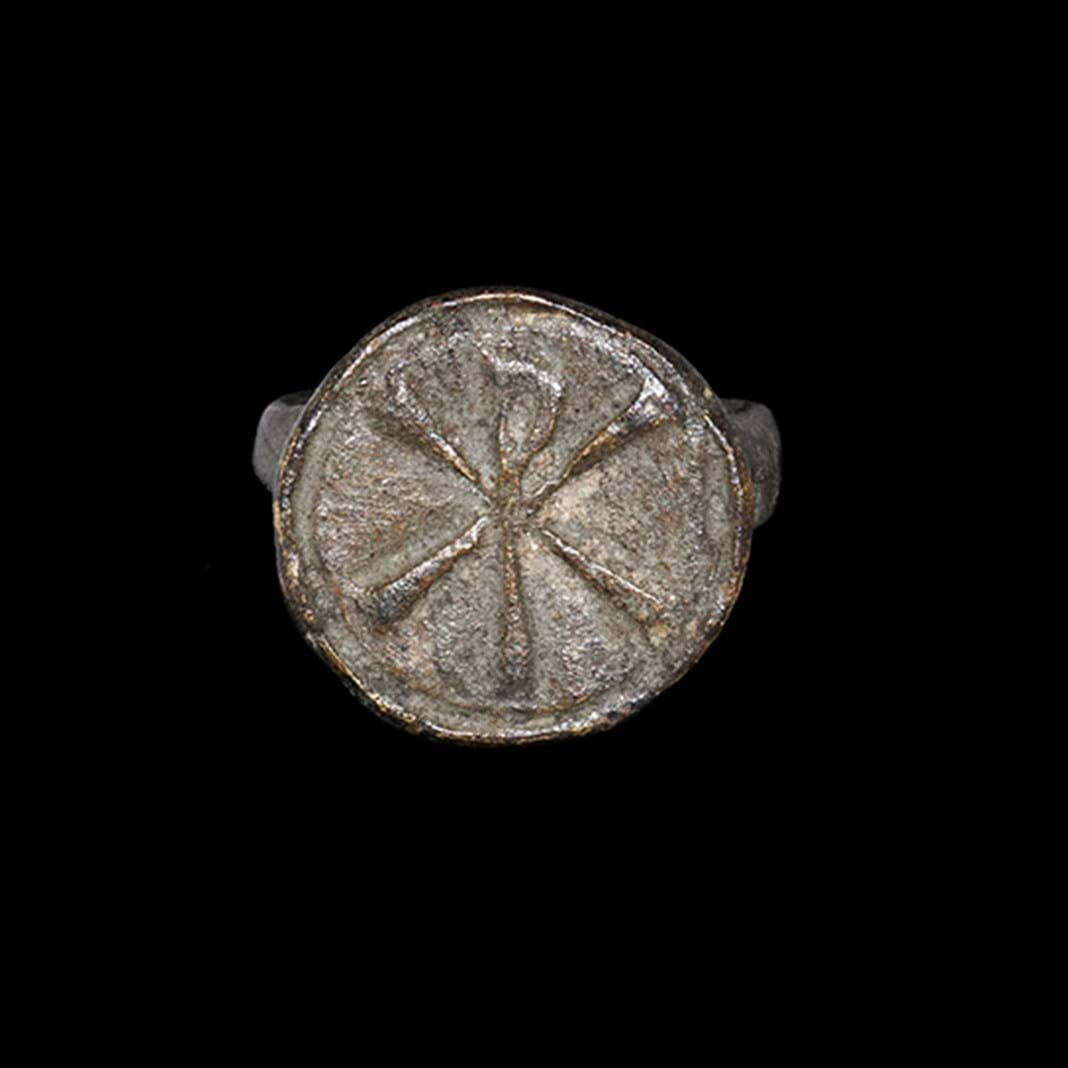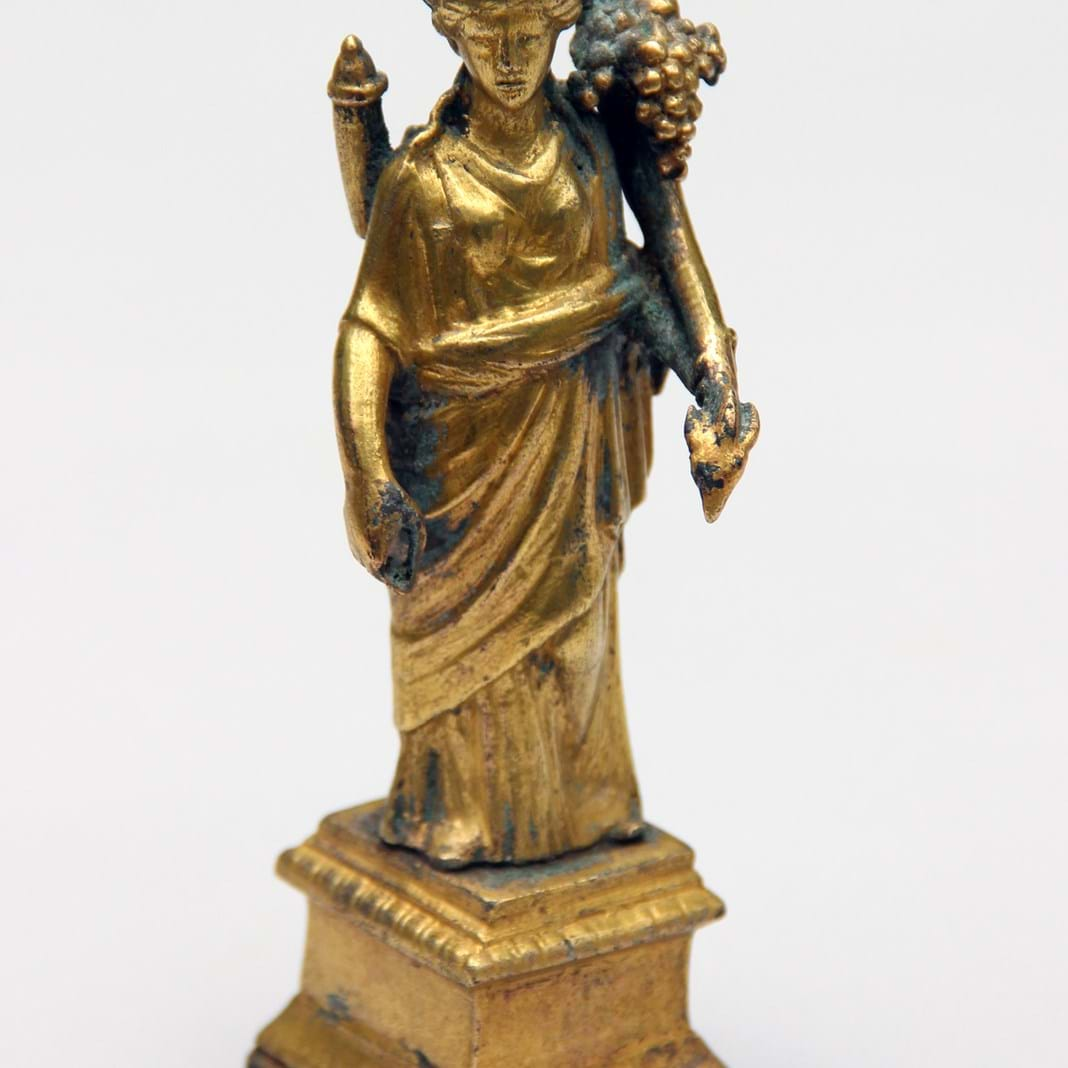Gold ring with enthroned Tyche - Fortuna
Origin
Rome or Constantinople
Date
5th century AD
Size / Dimensions
Diameter of bezel: 2.65 cm. Diameter of hoop: 2.72 cm. Weight: 14.99 g
Approx. ring size: UK O; USA 7½; EU 55¼; Japan 14
Provenance
Private collection, Alexandria 1930s-1956
Private collection Belgium 1956-1978
Acquired by AXIA in 1978
Gold pendant cross
It is in the form of a croix pattée (cross with paws) whose arms flare outwards from a central roundel with a pearl set in the middle and culminate in four similar discs framed by the eight round terminals of the arms of the cross (the paws of the croix pattée). The entire surface is executed in fine filigree, a technique which finds parallels in the contemporary jewellery of Fatimid Egypt and which continues in the Greek islands well into the Ottoman period.
Origin
Constantinople (?)
Date
Middle Byzantine period, 10th-12th century
Height: 4 cm
Width: 3.03 cm
Weight: 4.71 g
Provenance
Private collection, England
Acquired by AXIA from MN, London in 2017
A selection of gold and silver finger-rings with ‘box-shaped’ monograms
Origin
Eastern Mediterranean
Date
5th-6th century AD
A selection of gold and silver finger-rings with cruciform monograms
Origin
Eastern Mediterranean
Date
5th-6th century AD
A selection of gold marriage & betrothal rings
Origin
The late Roman World in East and West
Date
6th-7th century AD
Gold and cloisonné enamel miniature pendant cross
It is in the form of a croix pattée (cross with paws) with straight arms. In keeping with this type of middle-Byzantine cross, the arms spring from a central roundel and culminate in four discs of similar size framed by the eight round terminals of the arms (the paws of the croix pattée). in shape, size and decoration, this cross bears close resemblance to a piece in the Metropolitan Museum of Art, N.Y. (Acc. No. 1998.542)
Origin
Constantinople
Date
Middle Byzantine period, 10th-12th century
Height: 2.8 cm
Width: 2.2 cm
Weight: 3.84 g
Provenance
Private Collection TS, London
Miscellaneous Early Christian Rings from East and West
Origin
The Late Roman and early Byzantine world
Date
4th-7th century AD
Gilt bronze statuette of Tyche-Fortuna
Cast and mercury gilded, the figure stands on a separately cast pedestal.
Tyche is the Greek goddess of good fortune and abundance, known to the Romans as Fortuna. She is shown here in classical robes and wears a crown which combines cow horns, a sun-disk, and ears of corn. Her left arm supports a cornucopia, and the fingers of her right hand form an opening for what was probably a ship's rudder (missing). The central part of the crown is a symbol of the goddess Isis, while the cornucopia connects her to the goddess Tyche-Fortuna, and the ears of corn to Demeter. The rudder stresses the aspect of Isis as patron of navigation, which was known as Isis Pelagia.
From the Late classical world and into the early Byzantine period, Tyches-Fortunas were regarded as personifications of cities. The British Museum has a set of small gilt silver figurines with the Fortunas of Rome, Constantinople, Antioch and Alexandria. The identification of which city a particular Fortuna symbolises relies on their representations on coinage and is usually done on the basis of the headgear (Rome usually wears a helmet; Constantinople, usually a mural crown). But as many surviving examples show, this was not consistent. It is, therefore, not possible to identify with certainty of which city this statuette is the personification.
An unusual feature of this Tyche-Fortuna is the position of the phallic-looking device projecting over her right shoulder. Its tip is modelled exactly like the terminal of the handle of the rudder, or steering paddle which the goddess usually holds in her right hand. This would suggest that this Tyche carried the paddle on her back. But that brings into question what she would have held in the empty round opening between the fingers of her right hand, since this is how she would have held the paddle in the traditional manner. It may well be, therefore, that the purpose of this phallic-looking protrusion is simply symbolic of abundance, an association that would complement the elements of her crown and the cornucopia.
Origin
Eastern Mediterranean
Date
Late Roman period; 3rd-4th century AD
Height: 15.80 cm overall, 12 cm (statuette)
Provenance
Private collection, London
